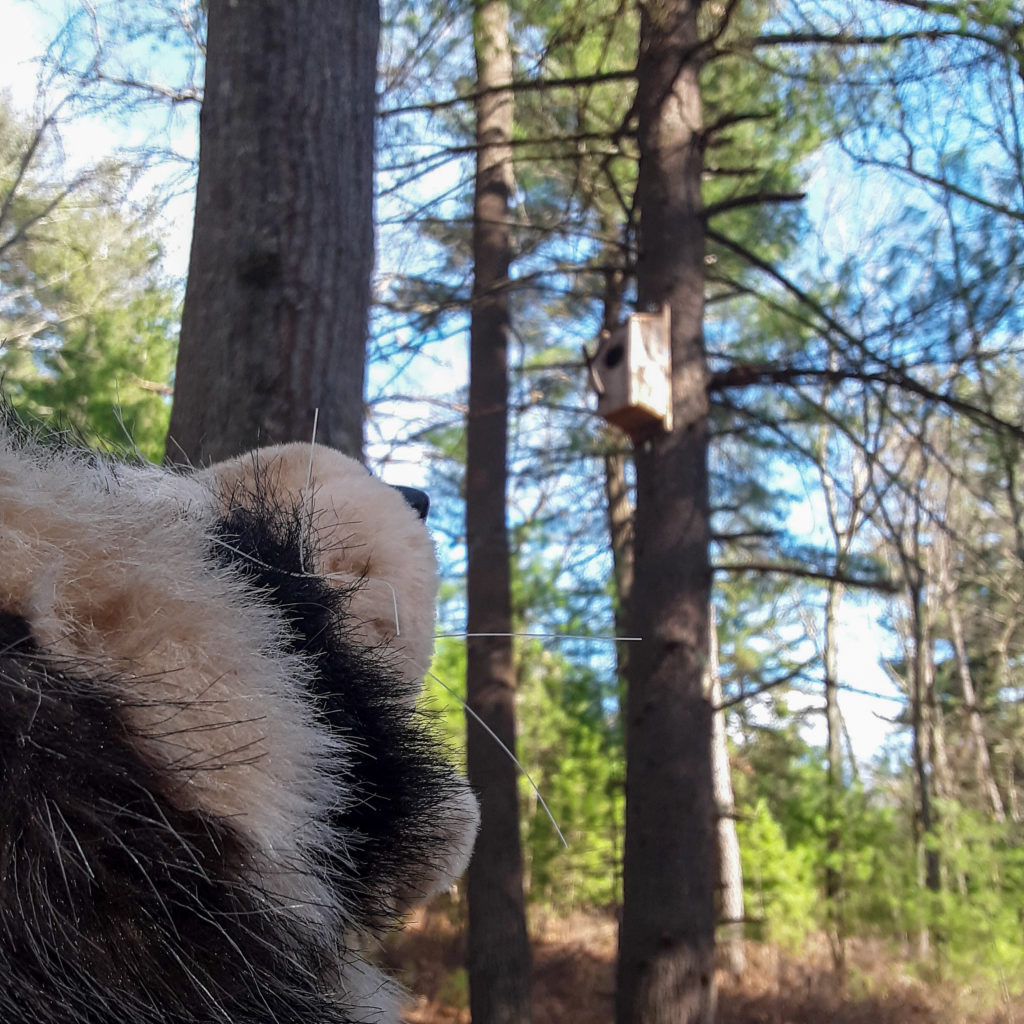
Milly has started today taking a tour of the Wildlife Sanctuary. She stopped to check out MABA’s Barred Owl Nesting Box by the vernal pool and hopes somebody moves in this spring.
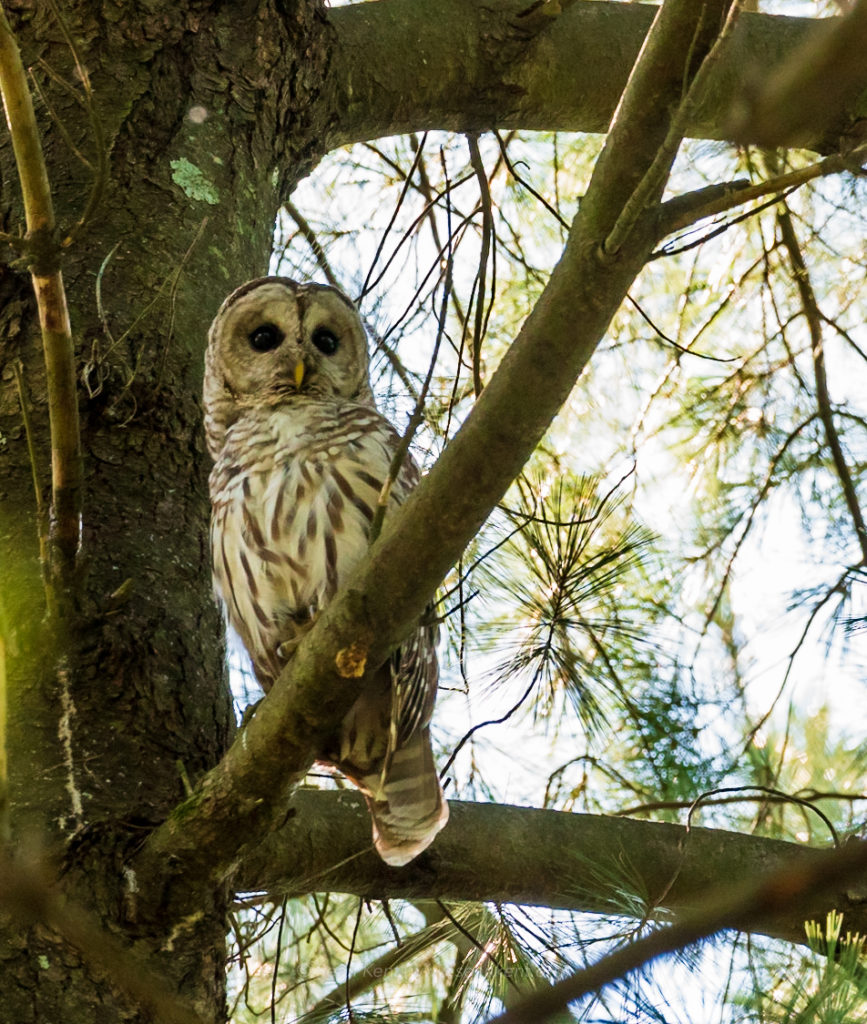


Milly has started today taking a tour of the Wildlife Sanctuary. She stopped to check out MABA’s Barred Owl Nesting Box by the vernal pool and hopes somebody moves in this spring.

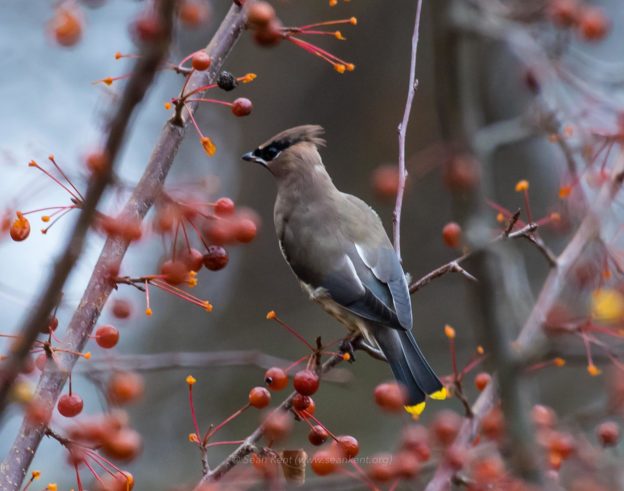
As the leaves have dropped to the meadow and forest floor, the beautiful fall color has not migrated from the wildlife sanctuary, but has transformed with color radiating from the birds and fruit that are ever-present in the fall and winter. 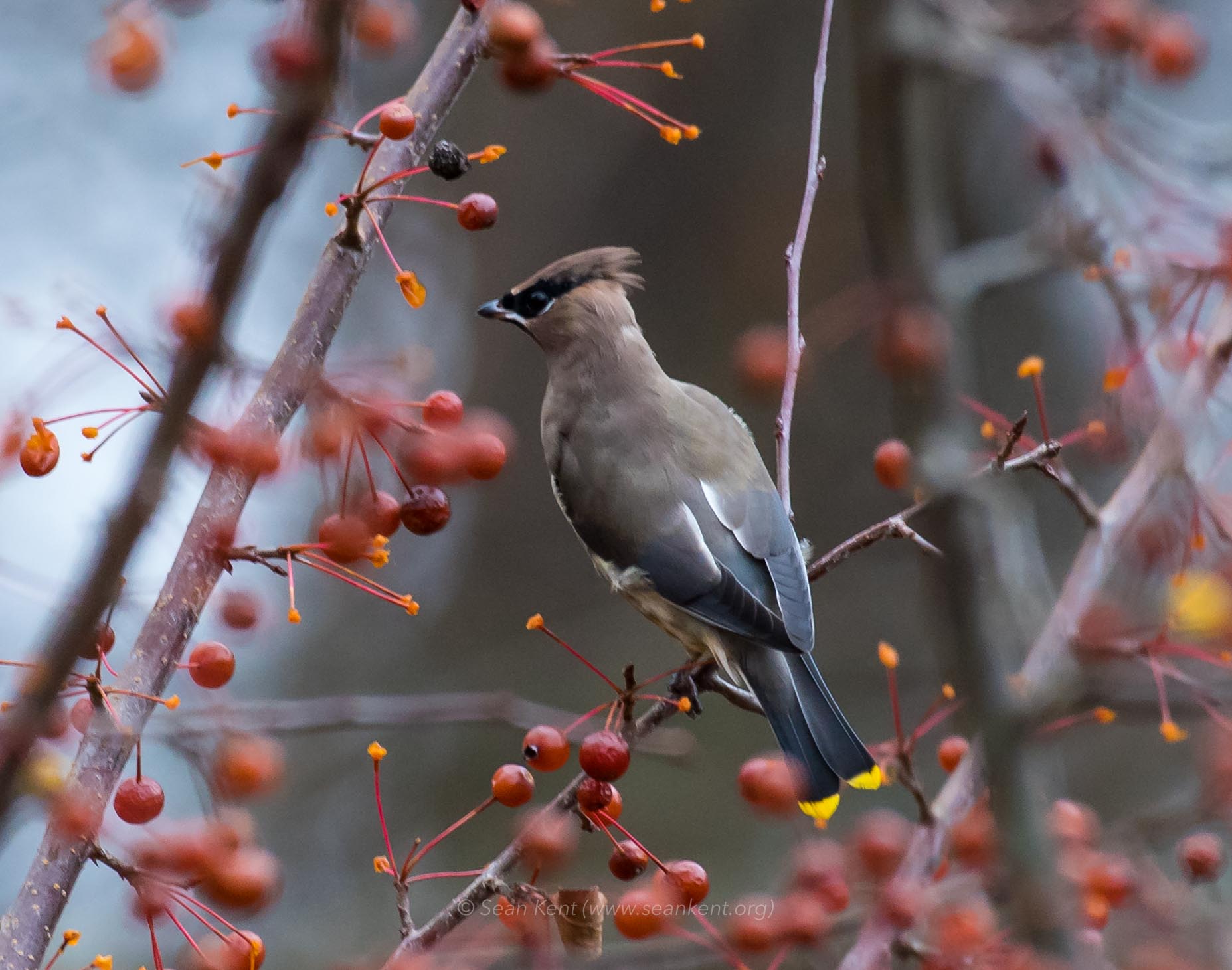 The bright red berries, from cherries, crabapples, and dogwoods, have been attracting hundreds of birds each day, including cedar waxwings. We have been fortunate to photograph large flocks of waxwings on the sanctuary.
The bright red berries, from cherries, crabapples, and dogwoods, have been attracting hundreds of birds each day, including cedar waxwings. We have been fortunate to photograph large flocks of waxwings on the sanctuary.
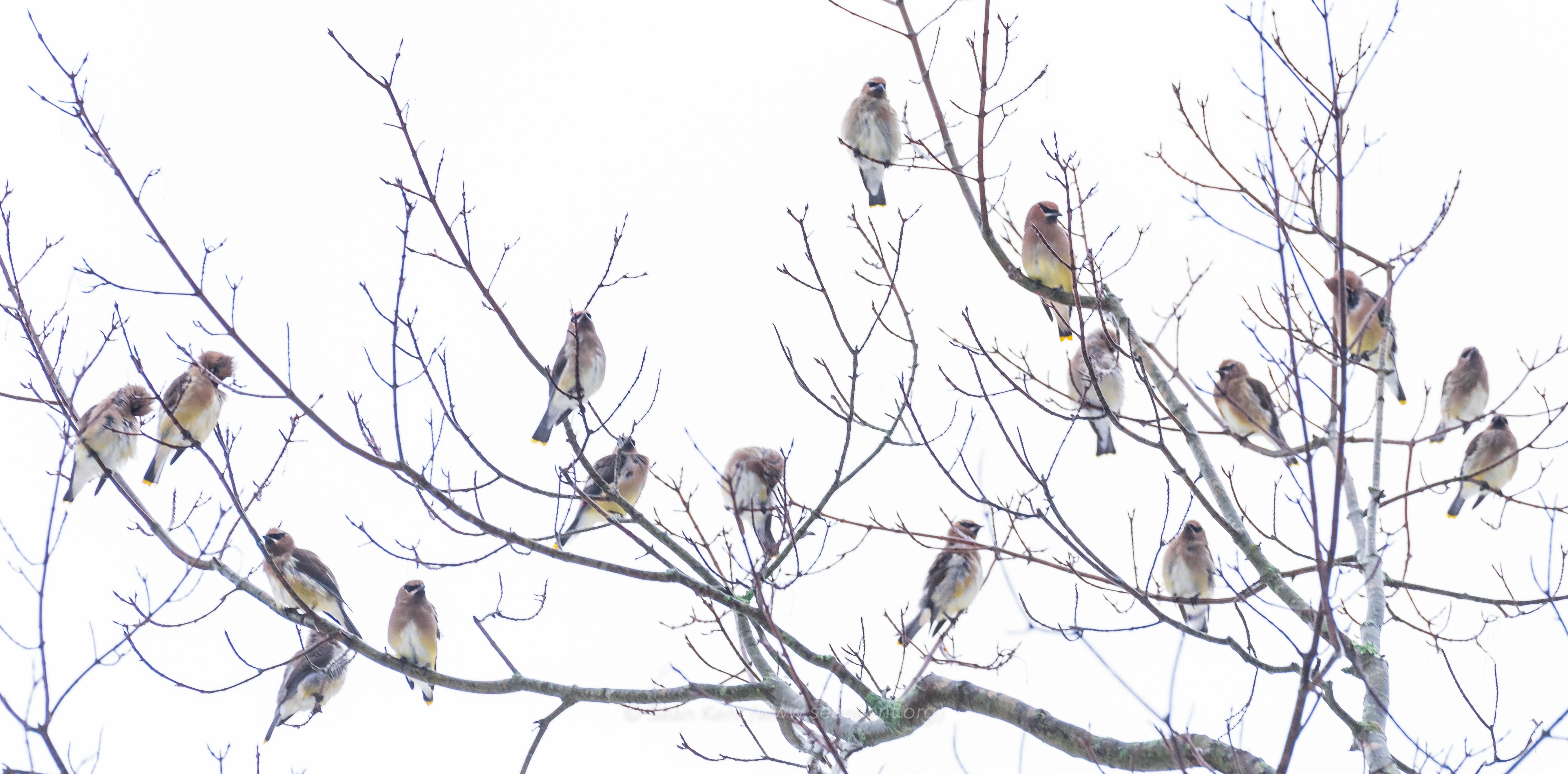
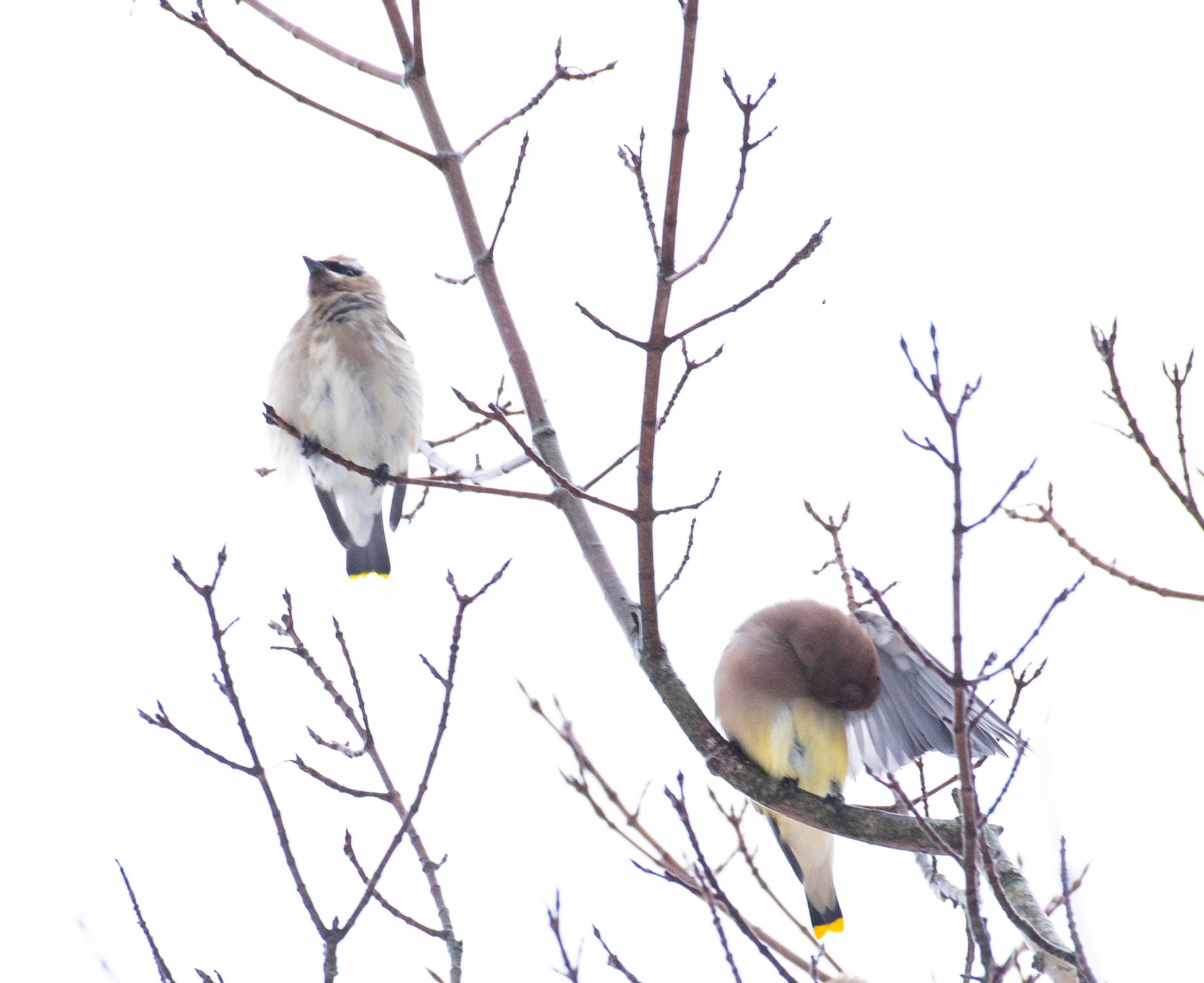
We hope you enjoy these photographs of the Cedar Waxwings from the past two weeks.
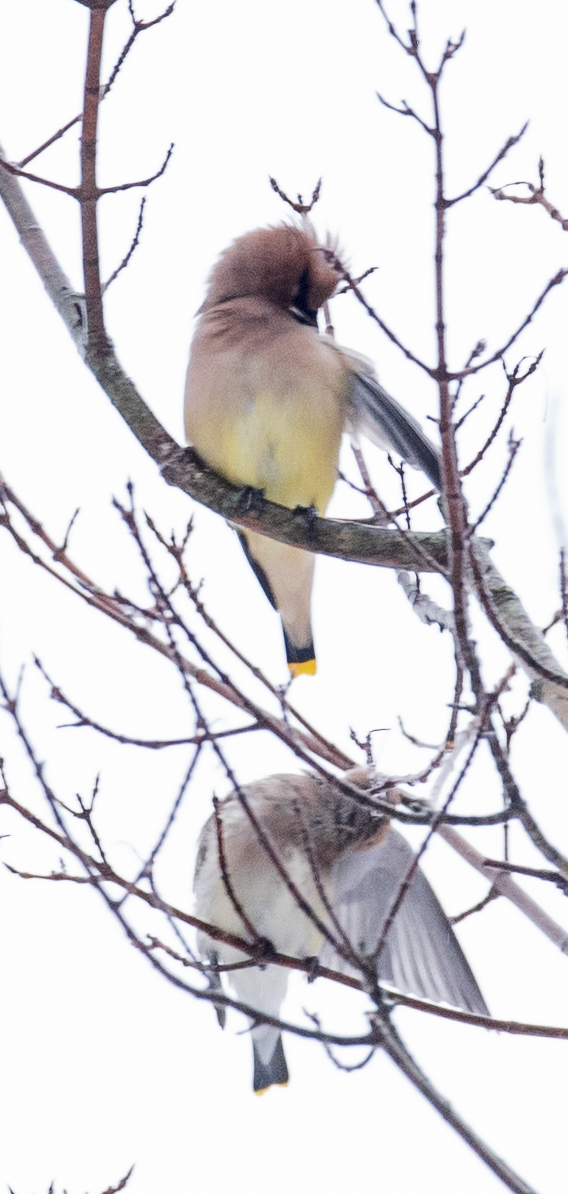
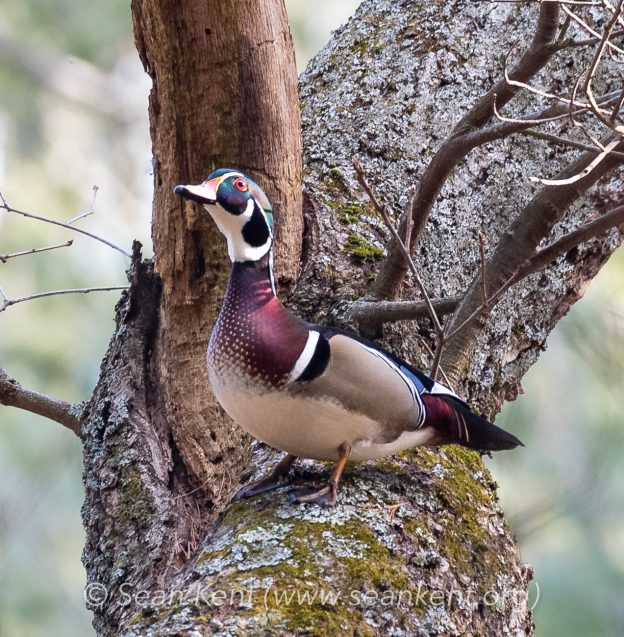
Nature in a minute to start off the week of April 9, 2018. We’ve had wood ducks spotted at the vernal pool 4 times over the past week. Here are a few wonderful new trail camera videos showing the wood ducks. They spent over three hours in the vernal pool on Saturday morning, April, 7, 2018. If you listen closely to the black and white video (it’s take at dawn ~5:15 am) you can hear the wood ducks talking to one another, it sounds a little bit like zippers opening and closing. Enjoy the following three videos.
Our vernal pools have been bursting with life this spring. Spotted salamanders and wood frogs have migrated into our vernal pools in the last week or two.
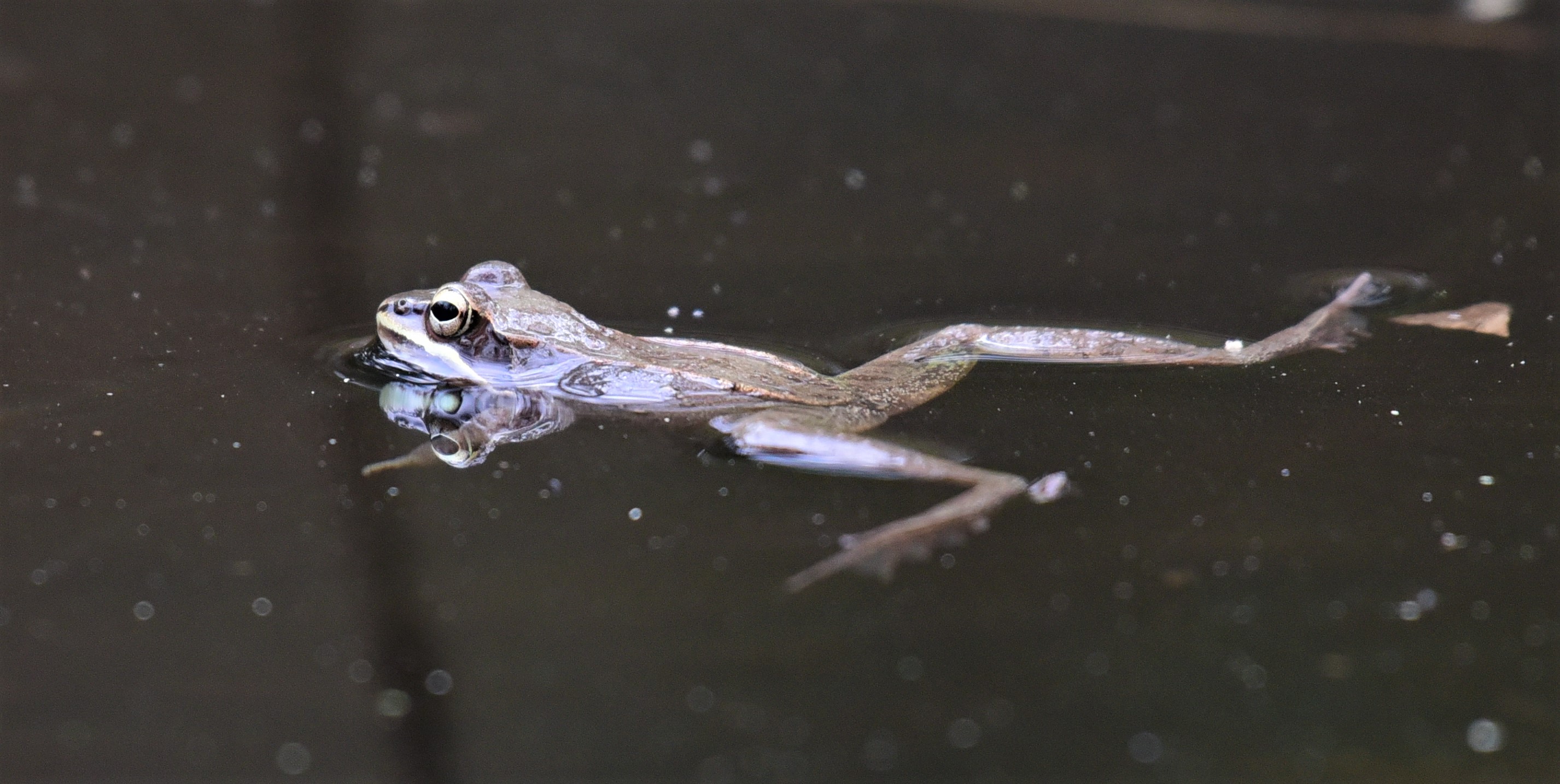
Wood frog in our main vernal pool calling and looking for mates.
Last week, I placed a trail camera on the edge of the vernal pool trying to record spotted salamanders visiting the pool during big night, which is the night – usually after or during a rainfall – that most salamanders migrate to the vernal pool to mate and lay eggs. I didn’t capture any video of the spotted salamanders, but I was able to photograph spotted salamanders in the pool the following morning.
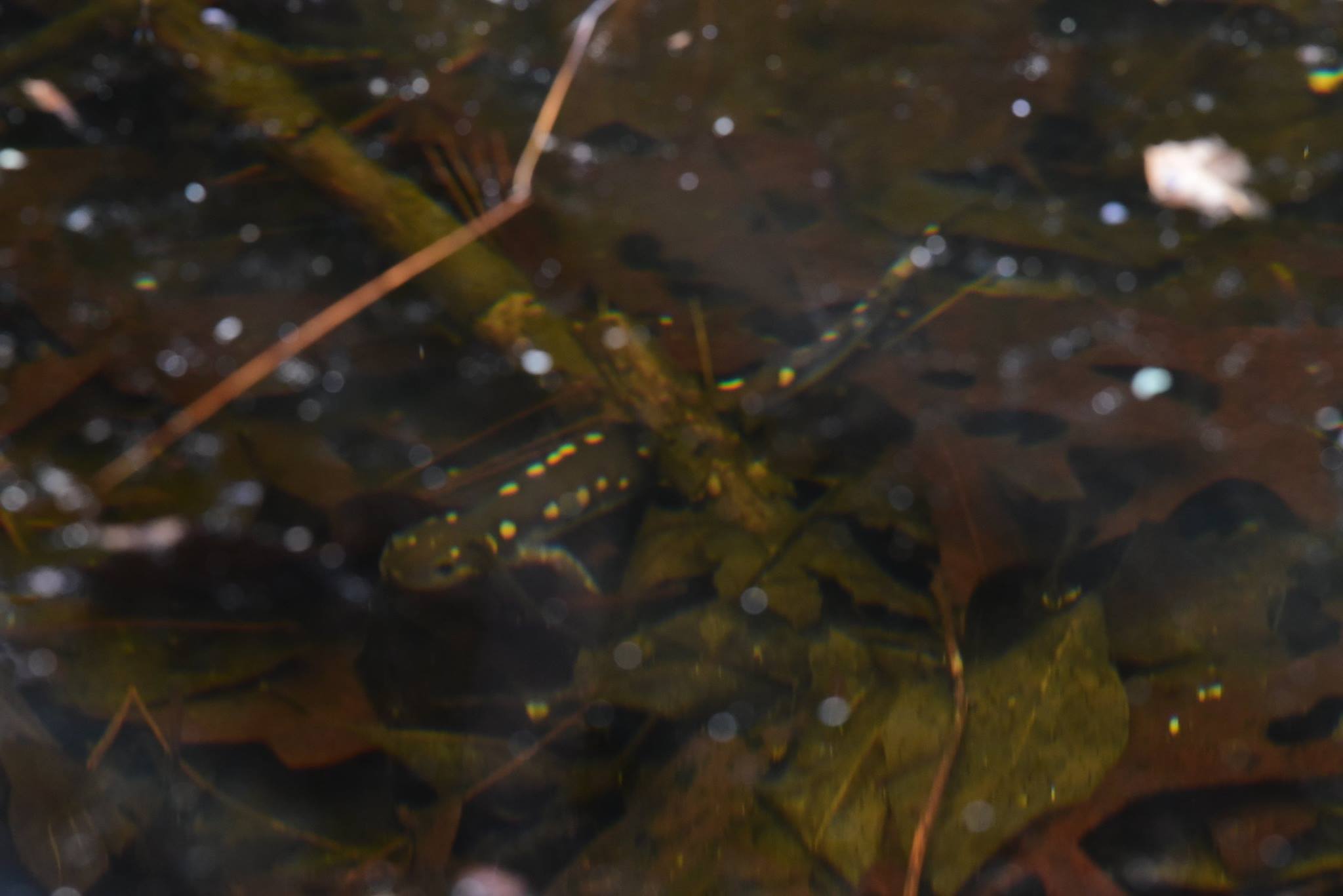 The trail camera did pick up some really really exciting activity, a pair wood ducks on April 2 and April 3 using the vernal pool and checking out the wood duck. Enjoy the videos. I really love the one from 4:50 am on April 3 because of all the beautiful bird songs, fog, and serene sense of solitude that dawn always brings in the spring.
The trail camera did pick up some really really exciting activity, a pair wood ducks on April 2 and April 3 using the vernal pool and checking out the wood duck. Enjoy the videos. I really love the one from 4:50 am on April 3 because of all the beautiful bird songs, fog, and serene sense of solitude that dawn always brings in the spring.
Wood Ducks on April 3, 2018
Wood Ducks on April 2, 2018
Although spring is right around the corner, winter is hanging on with three Nor’easters in the past two weeks. After all the shoveling and arduous cleanup (huge thanks to our property manager Owen Cunningham), we took an hour to snowshoe the wildlife sanctuary and enjoy the quiet and calm that always seems to follow a large storm. The trees were blanketed with a thick snow and everywhere you looked the wildlife sanctuary was painted white.
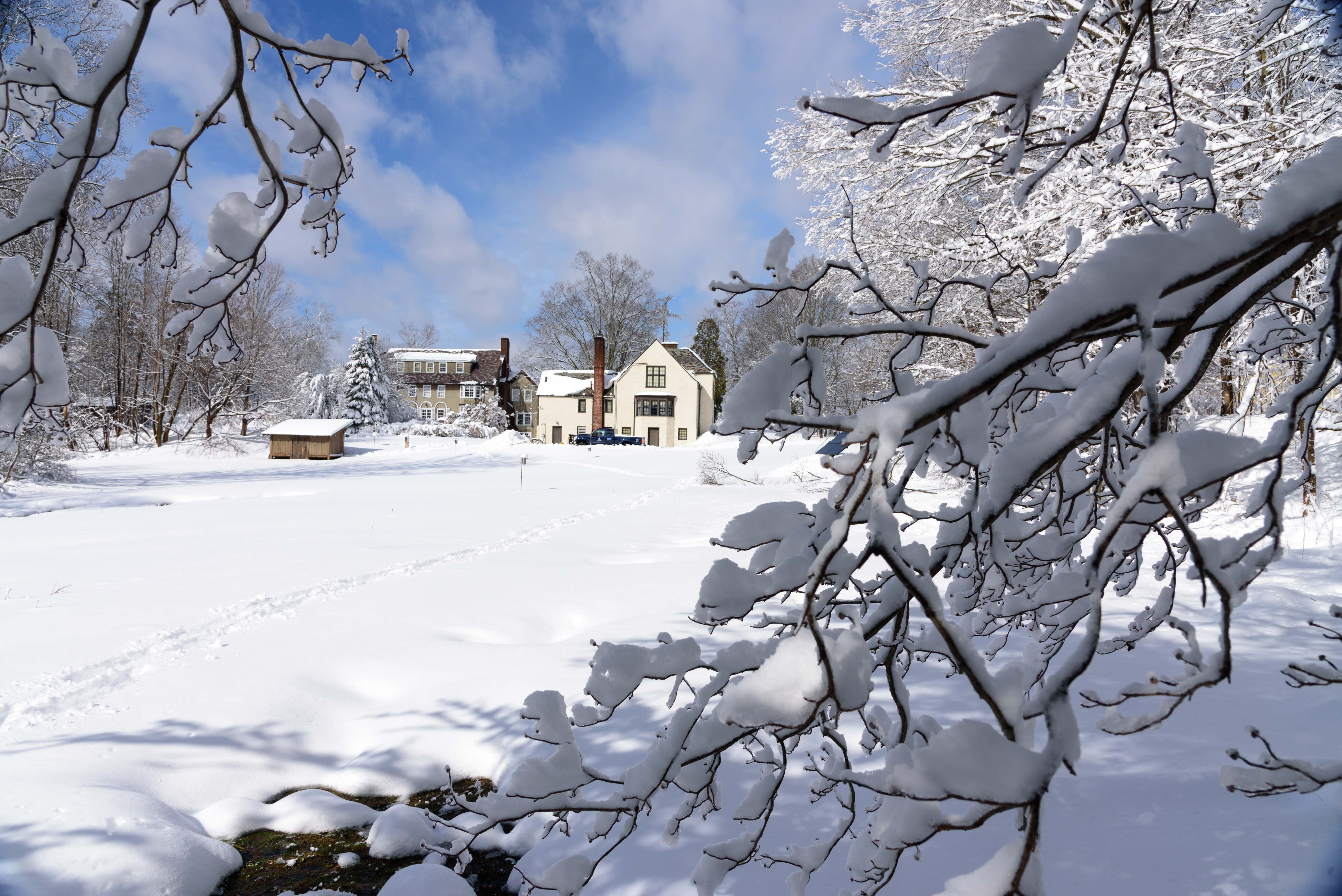
The meadow was blanketed with nearly two feet of snow and only one set of snow shoe tracks. 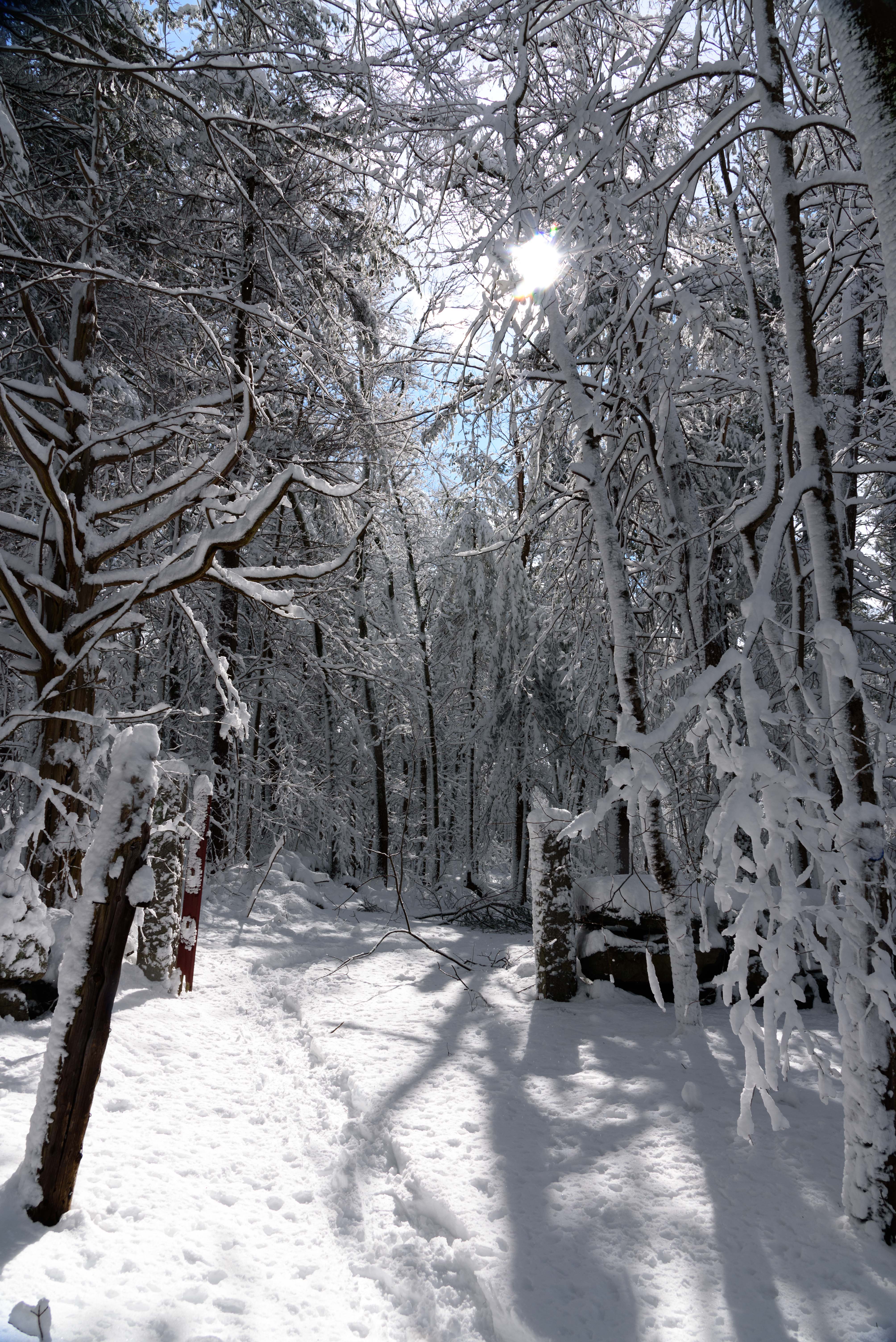
The start of the main loop trail.
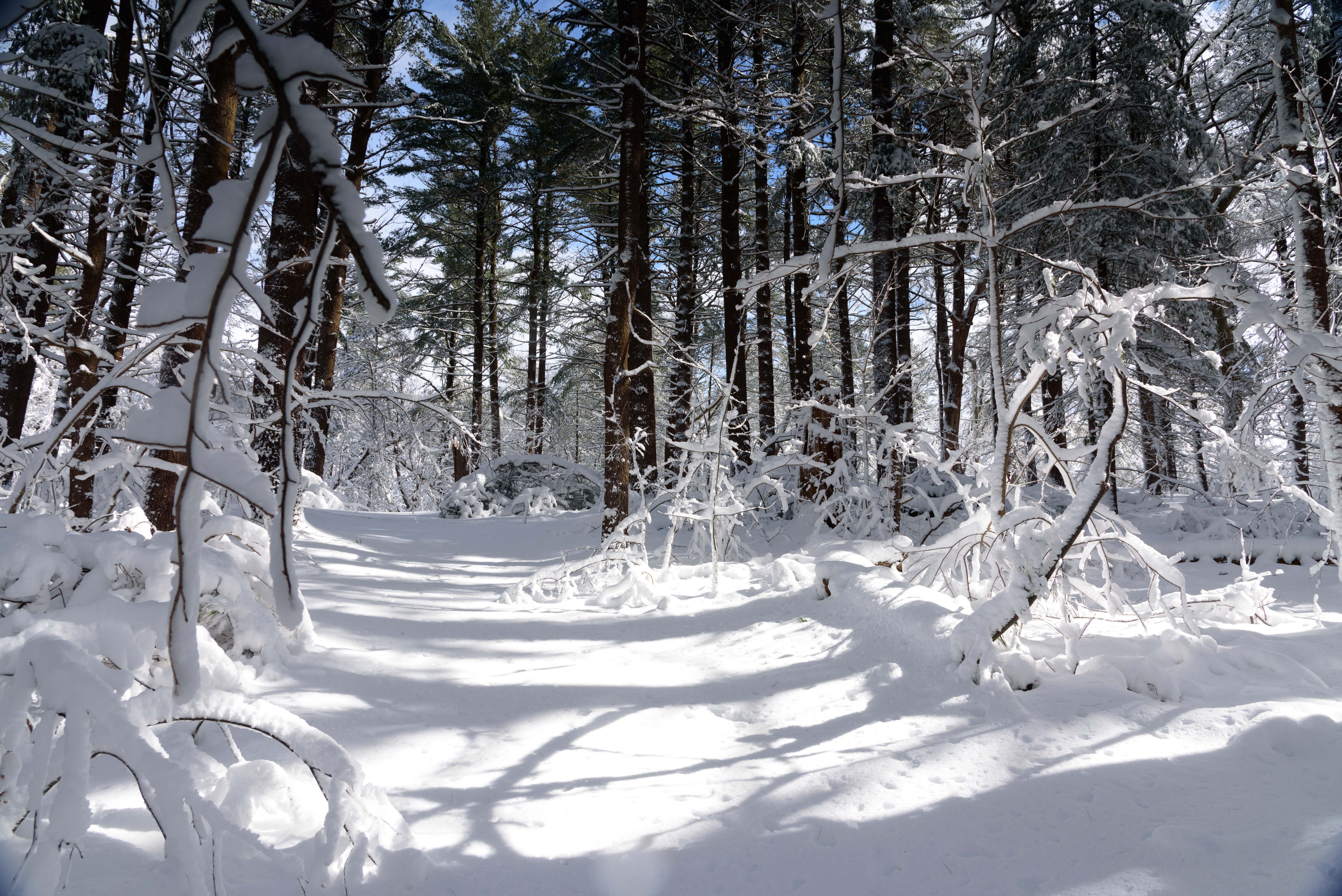
This trail leads to our vernal pool. In less than a month, as you walk up the hill you will be treated to an auditory sensation as a loud chorus of wood frogs welcomes spring. It is amazing how quickly nature turns in the spring. In two months, the pine forest floor will be covered with pink lady’s slippers that will be using the snow melt to thrive in May.
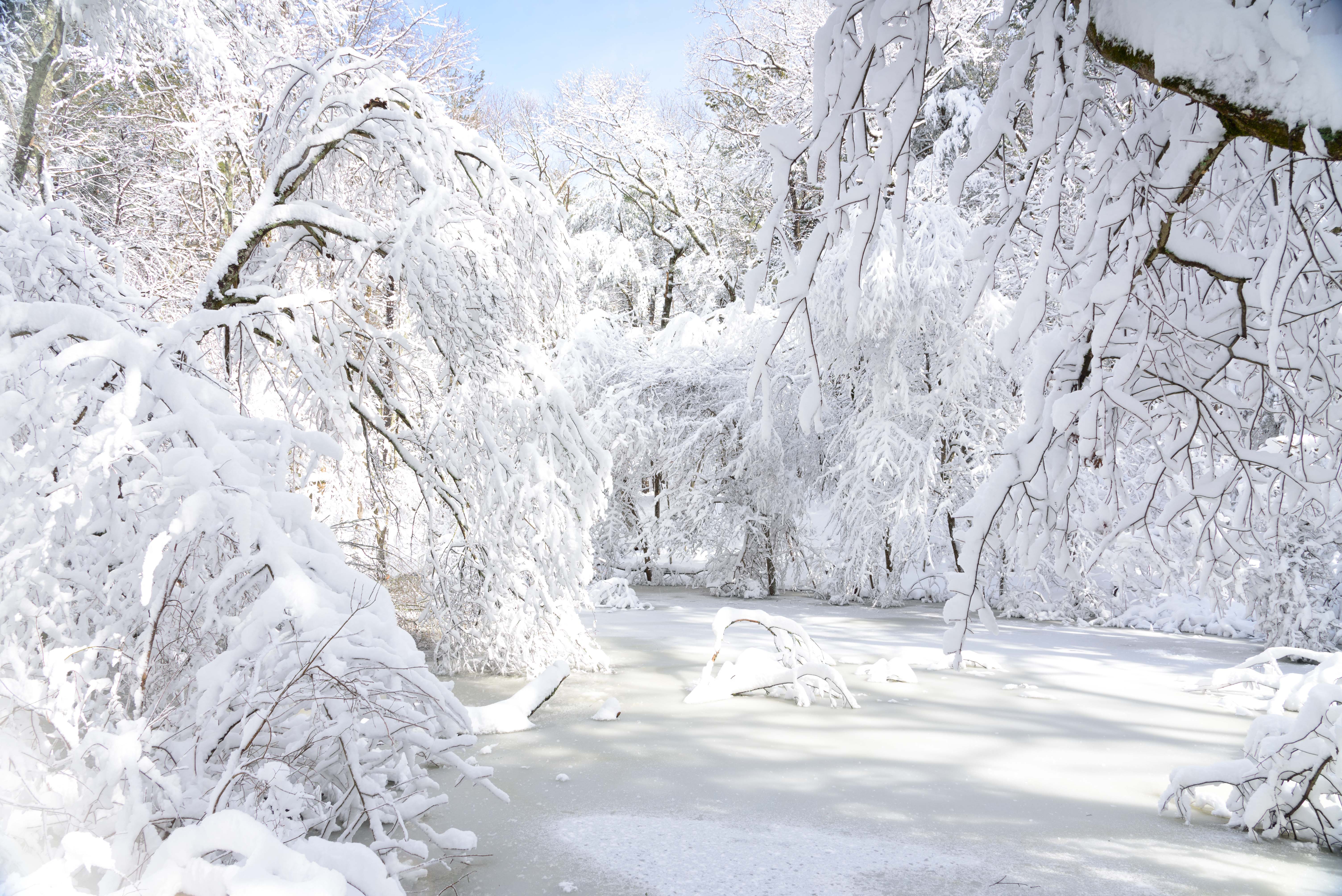
This is the spot that the wood ducks frolicked less than two weeks ago.

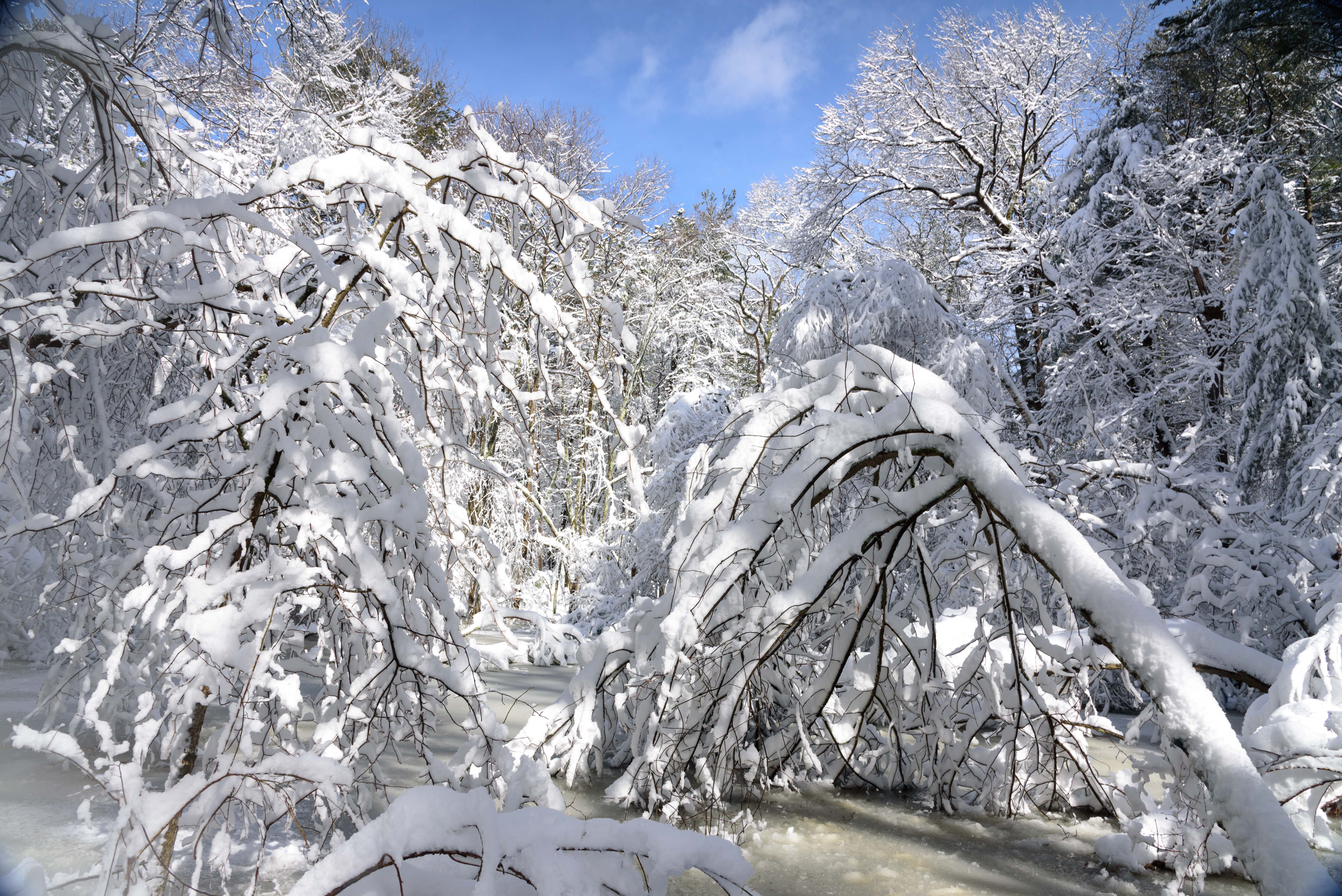
The vernal pool on our main loop trail.
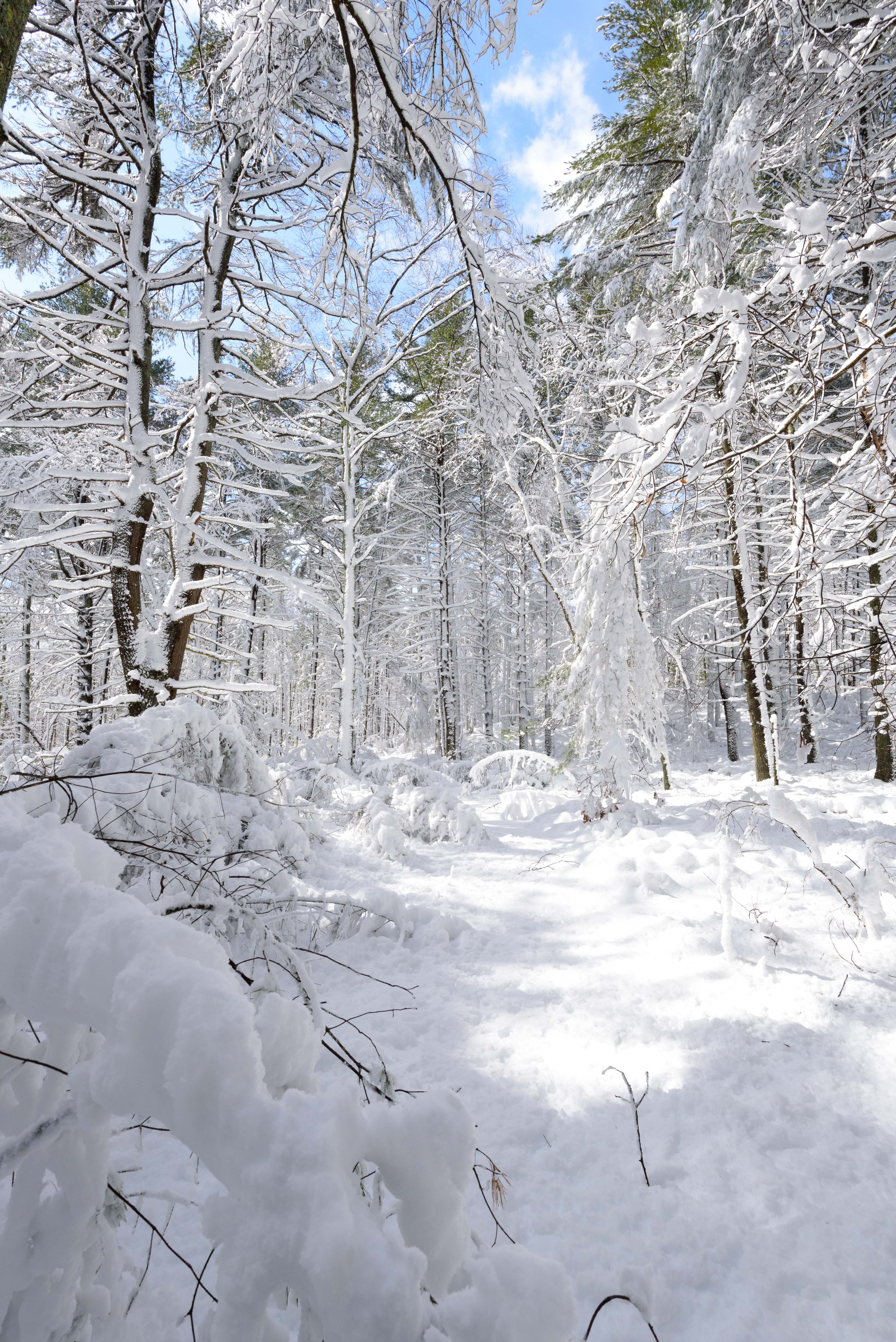
Snow weighing down the saplings growing in our pine grove.

Who will use this cavity in spring? Maybe a chickadee or hairy woodpecker?
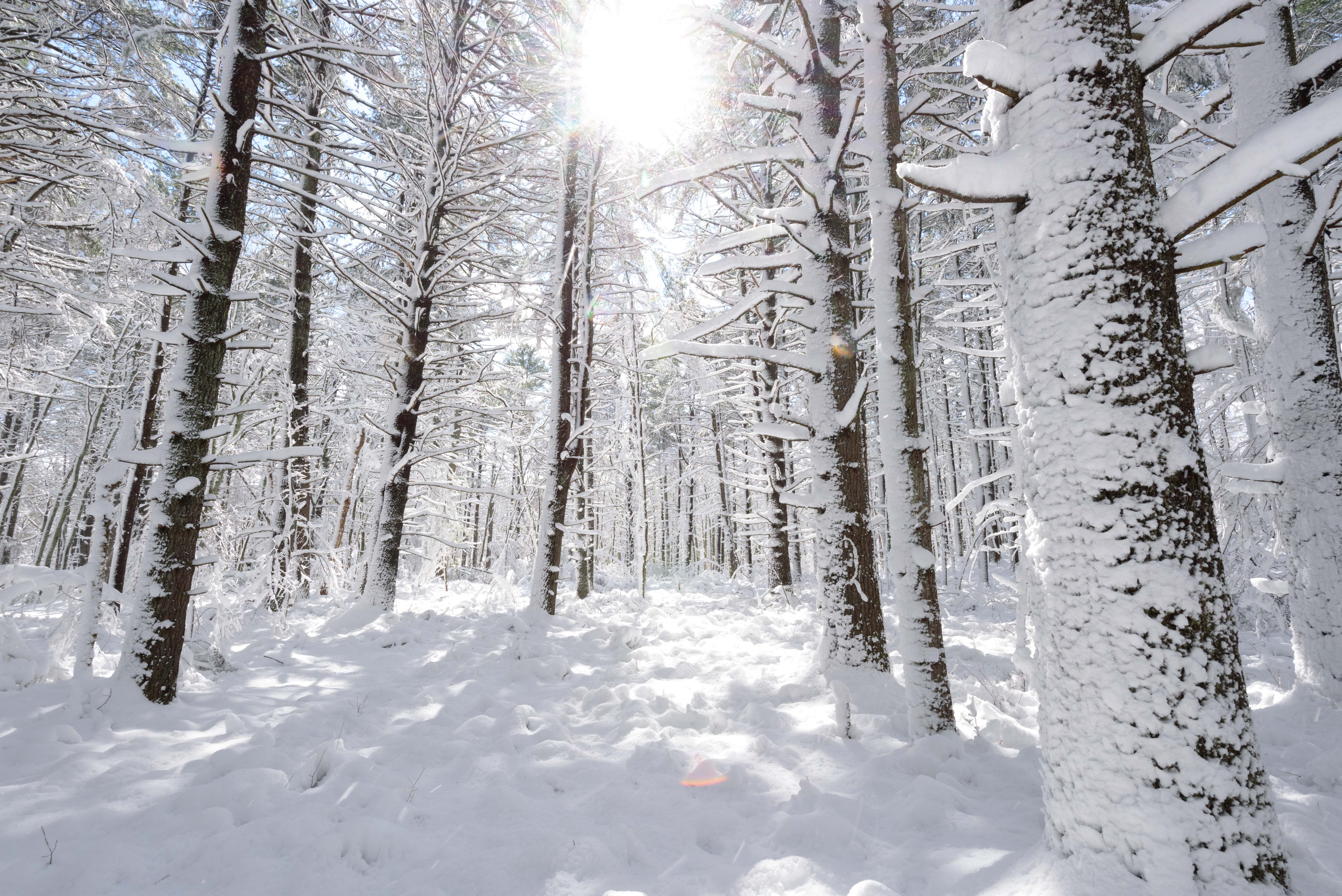
The pine grove. Deer recently walked by this scene.
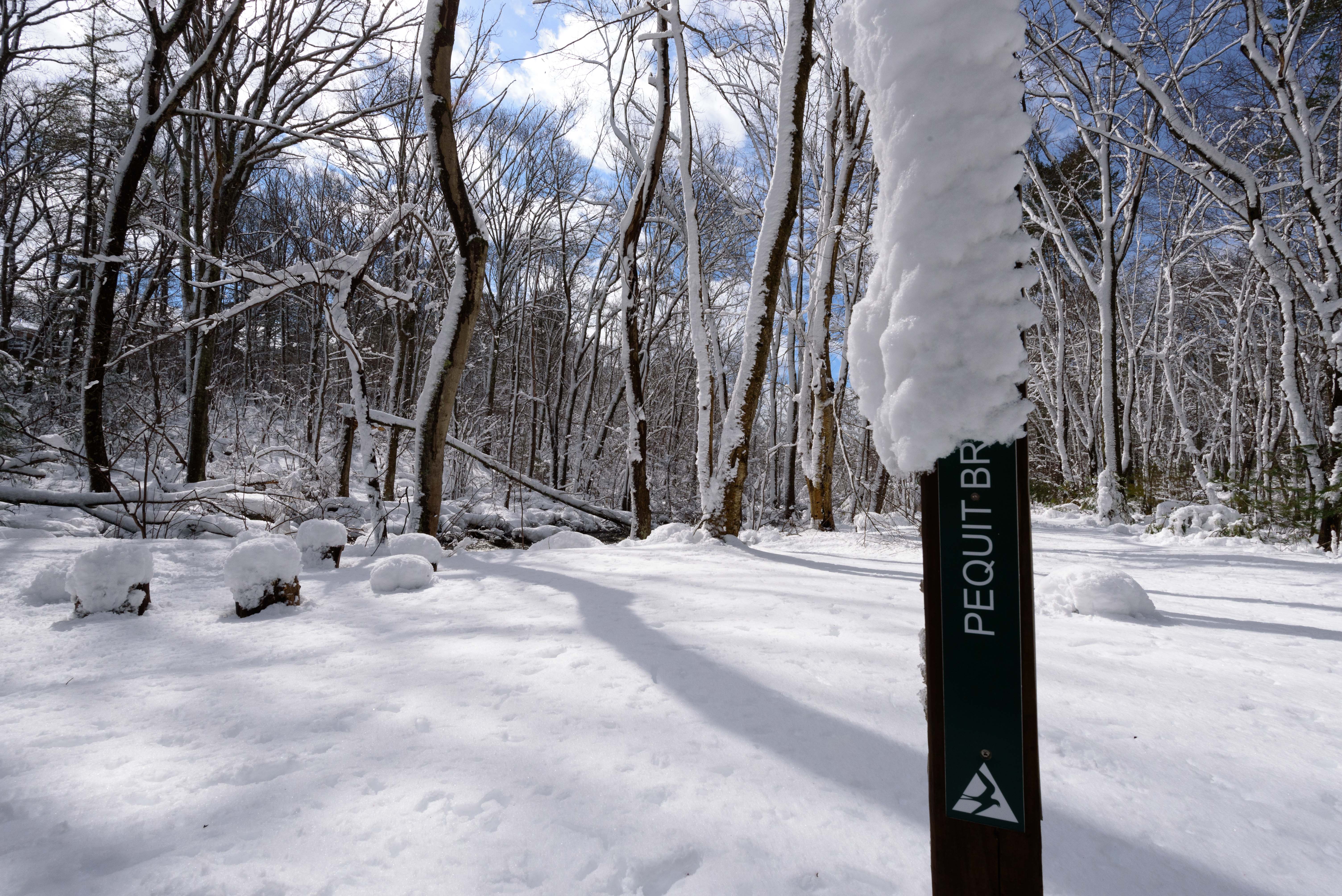
A snow covered Pequit Brook.
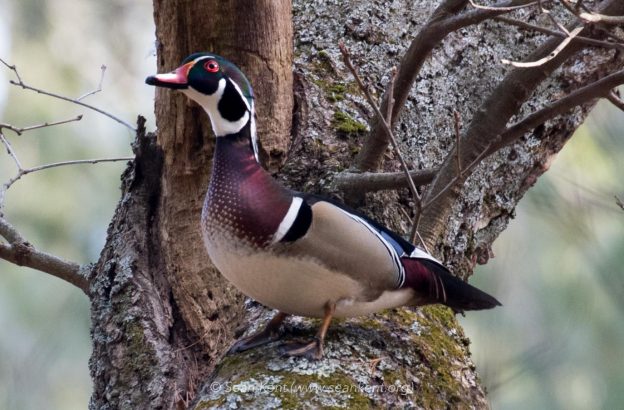
As a flock of robins “swarmed” in the pine grove, bright red male cardinals sung from the tallest trees, and fairy shrimp emerged from the vernal pool, a flock six wood ducks flew into the maple, oak, and pine trees above our vernal pool on the morning of February 28. Nature can be so wonderful!

I was fortunate enough to have my camera with me and I was able to capture a few pictures and one short movie of these amazing creatures. Enjoy this brief glimpse into the hidden world of the wildlife in our sanctuary.
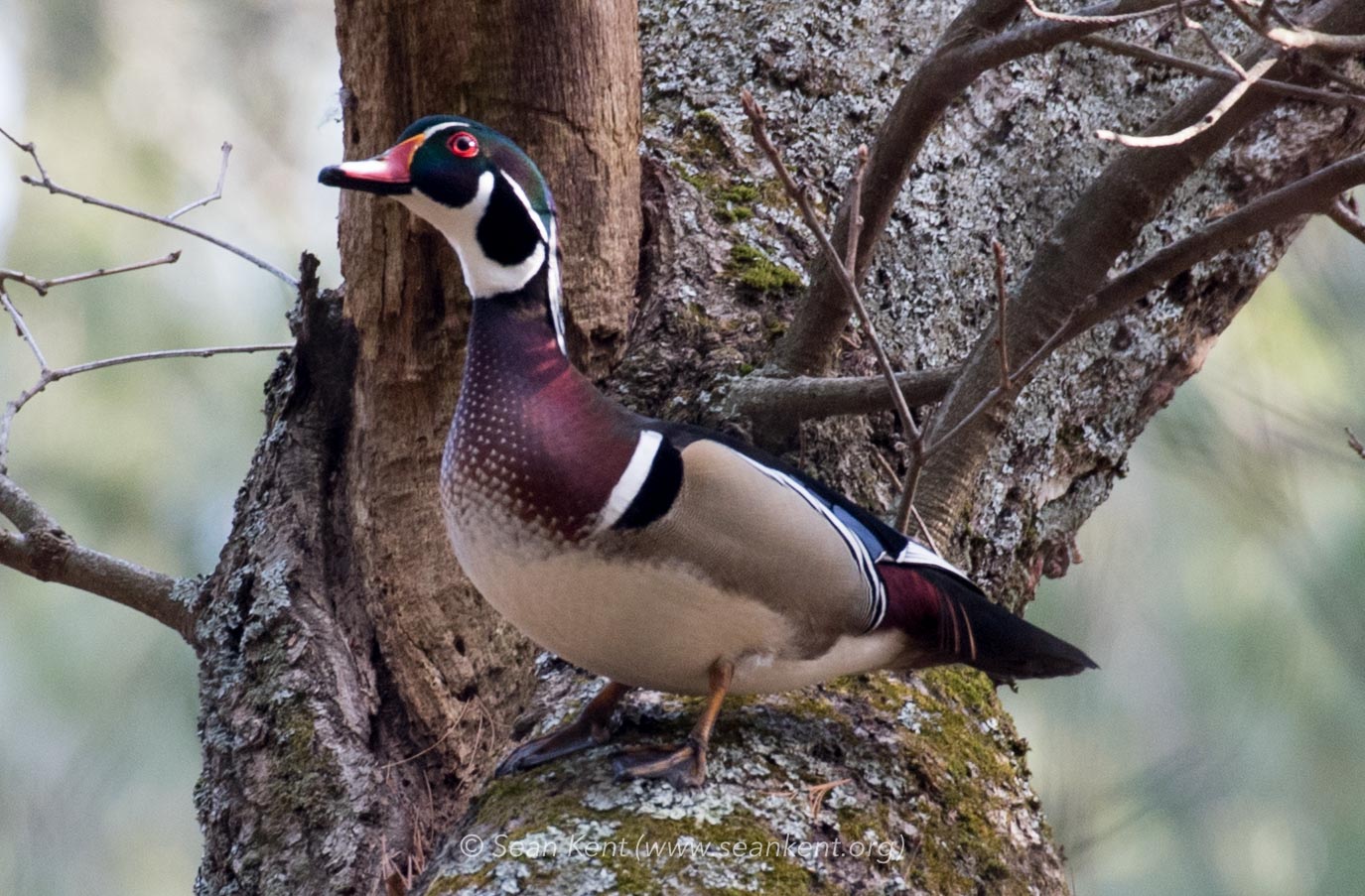
Watch and listen to the wood ducks chattering to one another high up in the trees.
The following are more photos of the wood ducks in the wildlife sanctuary.
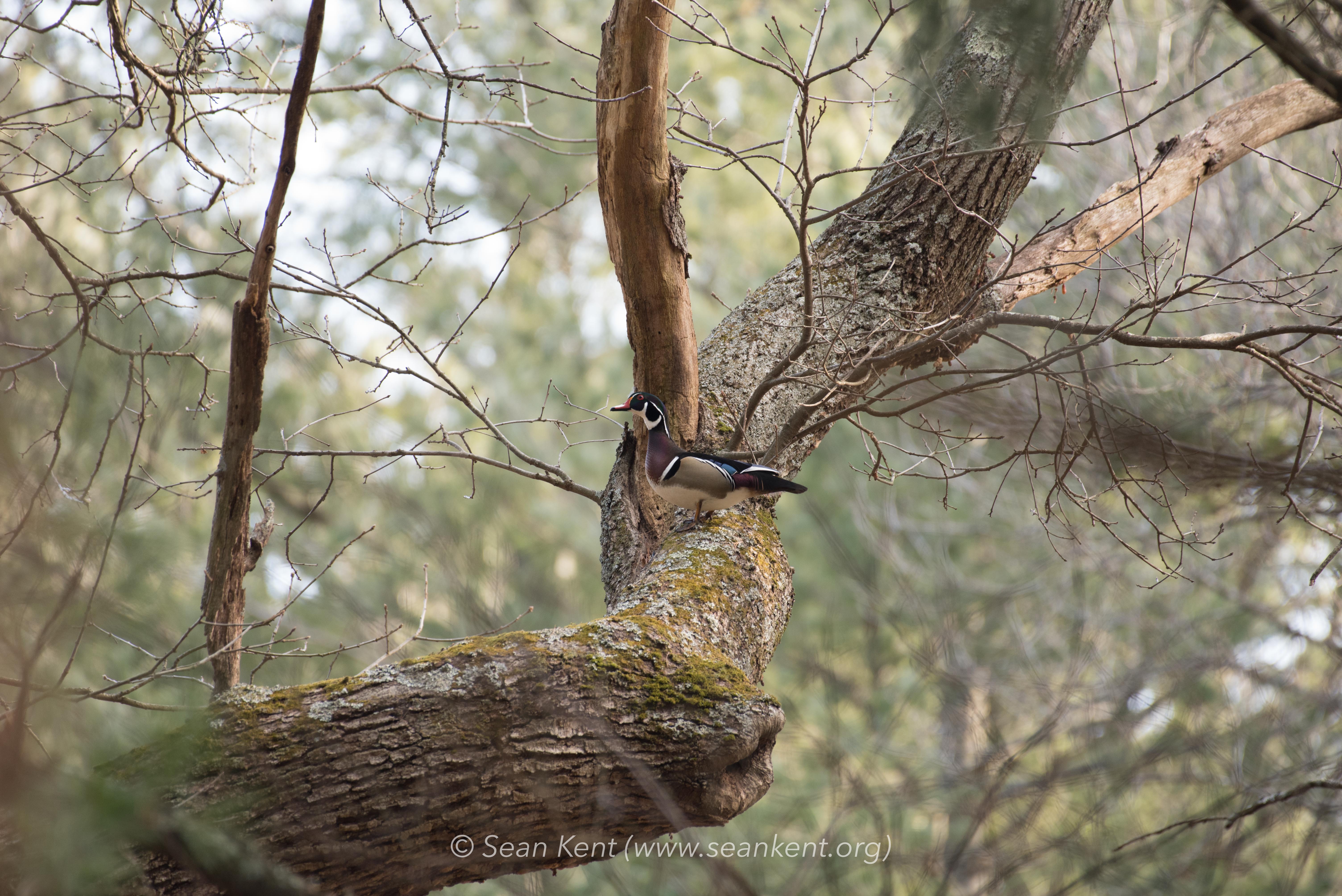
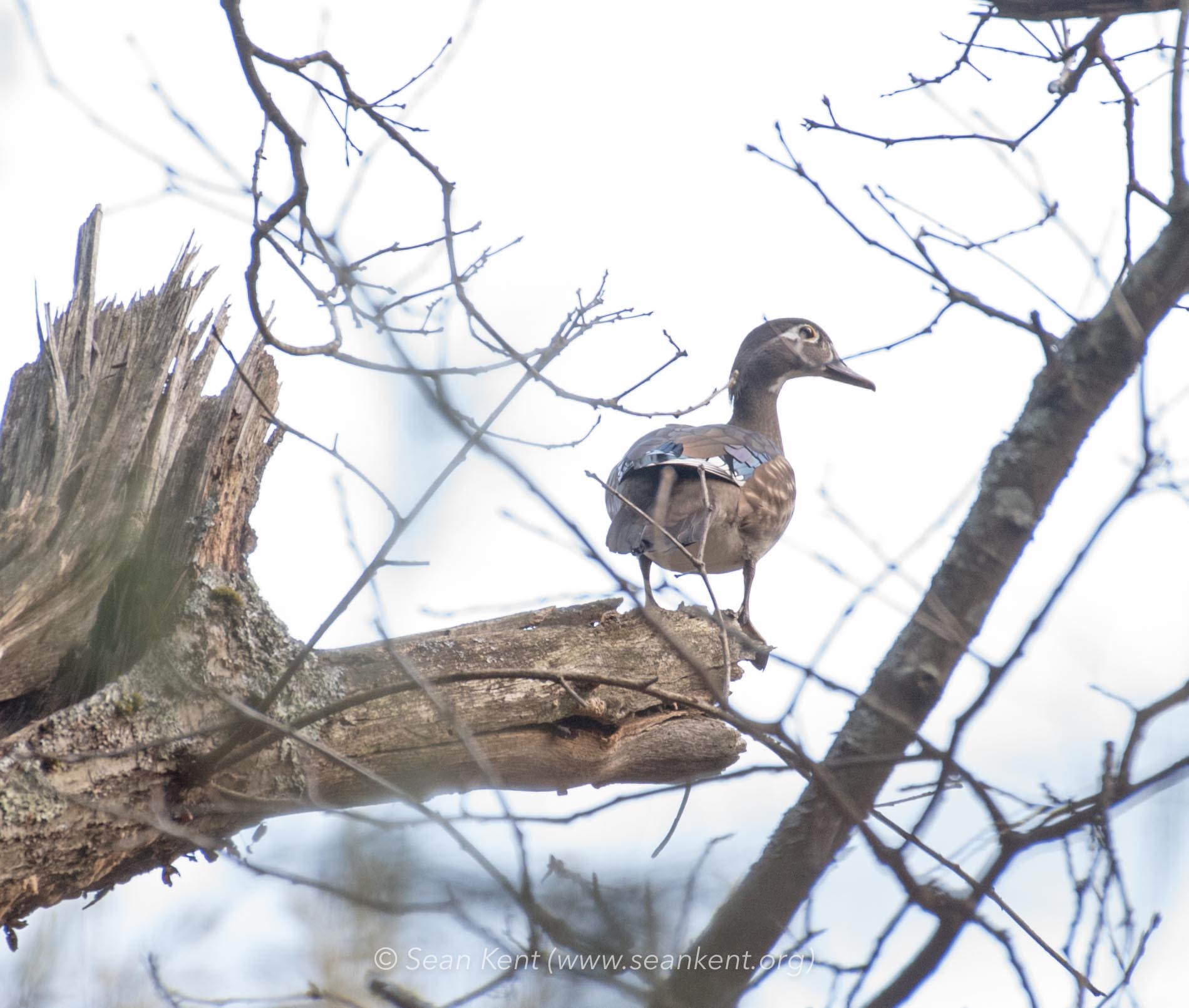

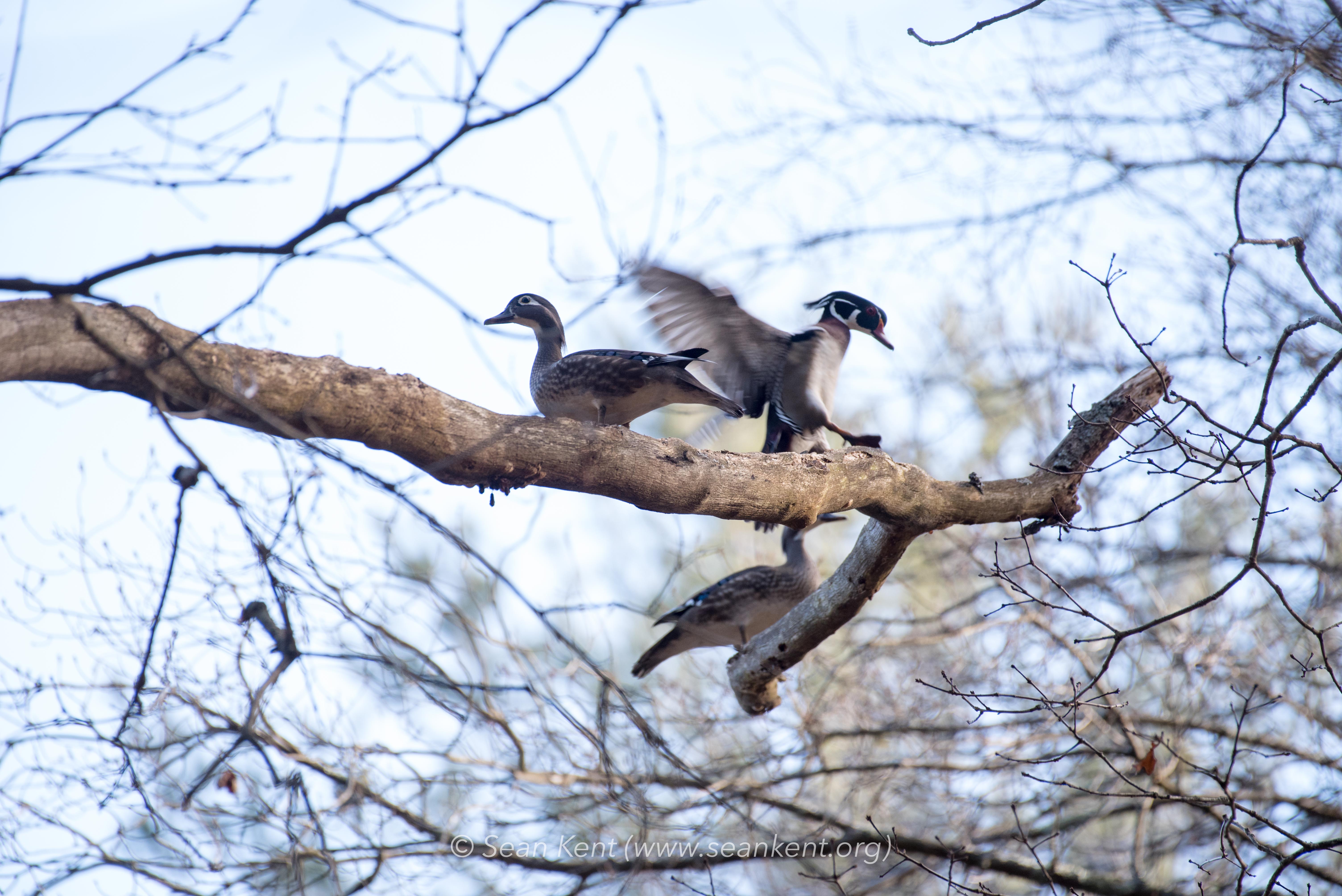
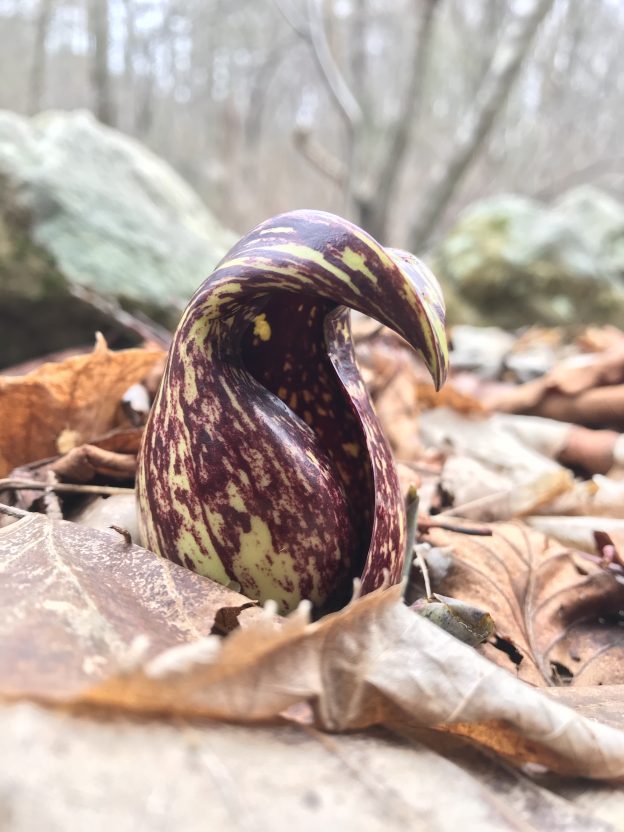
Over the past weekend, male red-winged blackbirds have returned to set up and defend breeding territories, the evening displays and buzzing songs of the male woodcock have brightened up evening hikes, and flocks of robins have descended in our pine sanctuary “vacuuming” up insects emerging as the world warms and sun shines just a little bit longer each day.
This post is a short video and photo essay of one of our earliest signs of spring, the emergence of eastern skunk cabbage. Since late January, these spring sentinels have been emerging by the Pequit Brook in Canton and next to a wetland near the meadow by the museum.
As I’ve looked closer at skunk cabbage, I’ve been amazed at the diversity of color exhibited by skunk cabbage and wanted to share that with you. Enjoy the following photos and videos of skunk cabbage emerging at the Pequit Brook.
September 2, 2016
Boston Nature Center, Mattapan
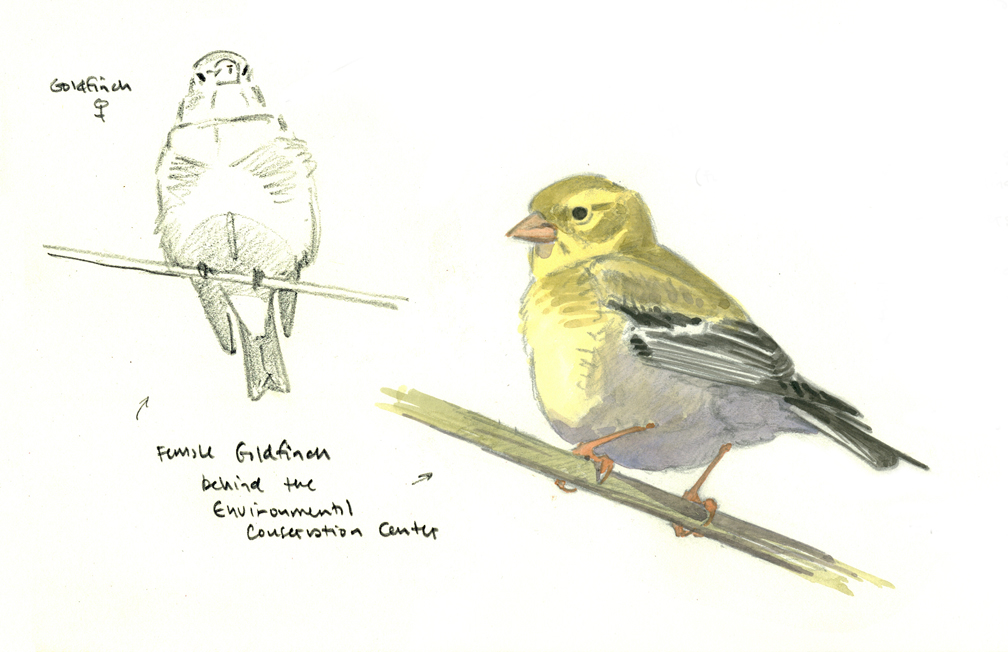
Mass Audubon operates only a few sanctuaries that can truly be categorized as “urban”, and of these, the Boston Nature Center in Mattapan best fits the description. Only a short distance from Mattapan’s downtown, and on the grounds of the former Boston State Hospital, this small oasis of green (67 acres) is surrounded by urban neighborhoods, highways and businesses. You’re never quite out of earshot of traffic, sirens, construction noise and other sounds of the city.
The Nature Center is a hive of activity when I arrive at 8 am. Today is the final day of summer camp, and a steady parade of parents are dropping off their kids. Counselors are busy preparing for the day’s activities and herding the campers into groups. I wander through the impressive George Robert White Environmental Education Center – the first “green” municipal building in Boston, and then stroll through the Butterfly Garden outside. A diverse assortment of trees surrounds the Center, many of them huge, venerable specimens. I get busy with a painting of a mourning dove basking in the morning sun.
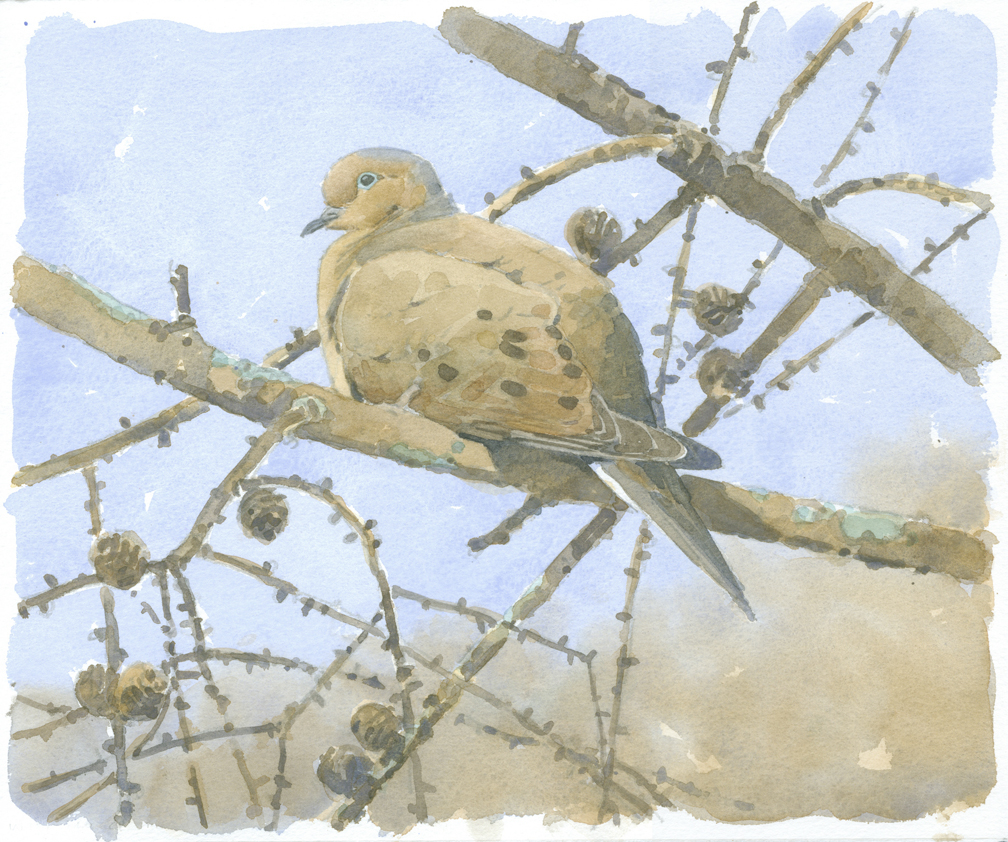
Mourning Dove in Tamarack, watercolor Arches coldpress, 9″ x 11″
The dove is perched in an old tamarack, and the twigs and cones provide an interesting pattern around the bird. A song sparrow and several goldfinches also make for good models, and as I work, a warbling vireo sings from a big poplar nearby.
I meet program coordinator Adam Leiterman and get a tour of the Nature Center, including the indoor observation hive of honeybees. Then, Adam offers some advice and helpful tips before I set out to explore the two miles of trails.
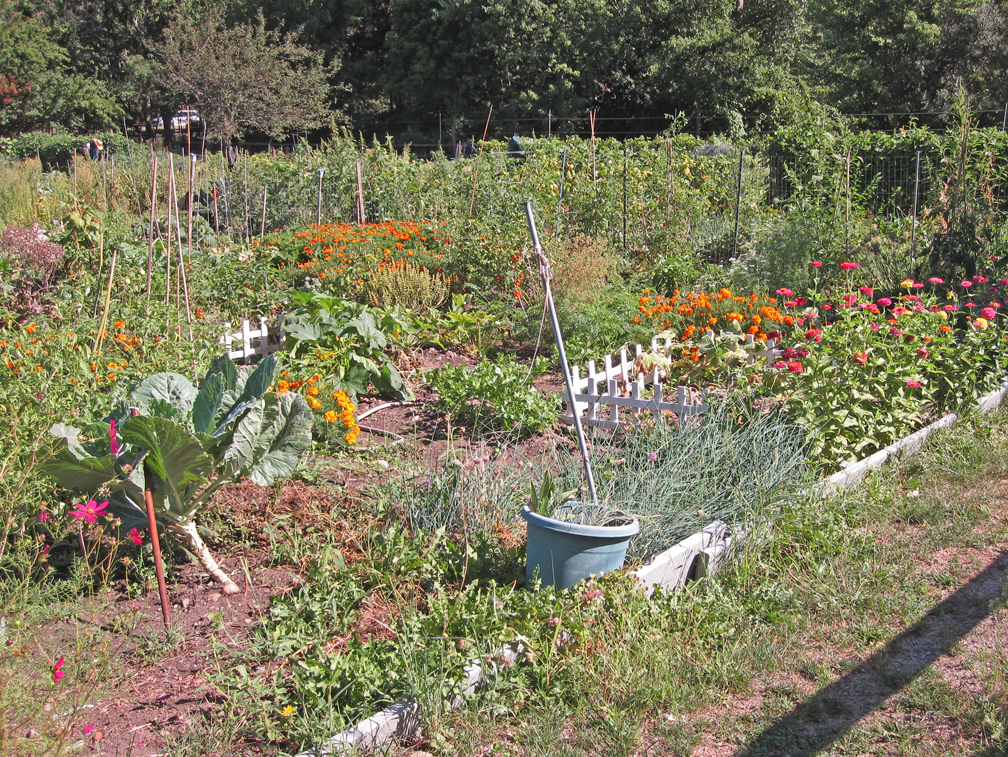
Clark-Cooper Community Gardens
My first stop is the Clark-Cooper Community Gardens – one of the oldest and largest community gardens in Boston, providing garden space for more than 260 local families. With acres of flowers, vegetables and fragrant herbs, it’s a great place to escape the bustle of the city for a few hours.
On the Snail Trail, I pass through a mature forest of oaks and silver maples, interrupted by sunny glades of lush undergrowth. I watch a flock of young starlings gorging on wild grapes, and make some drawings.
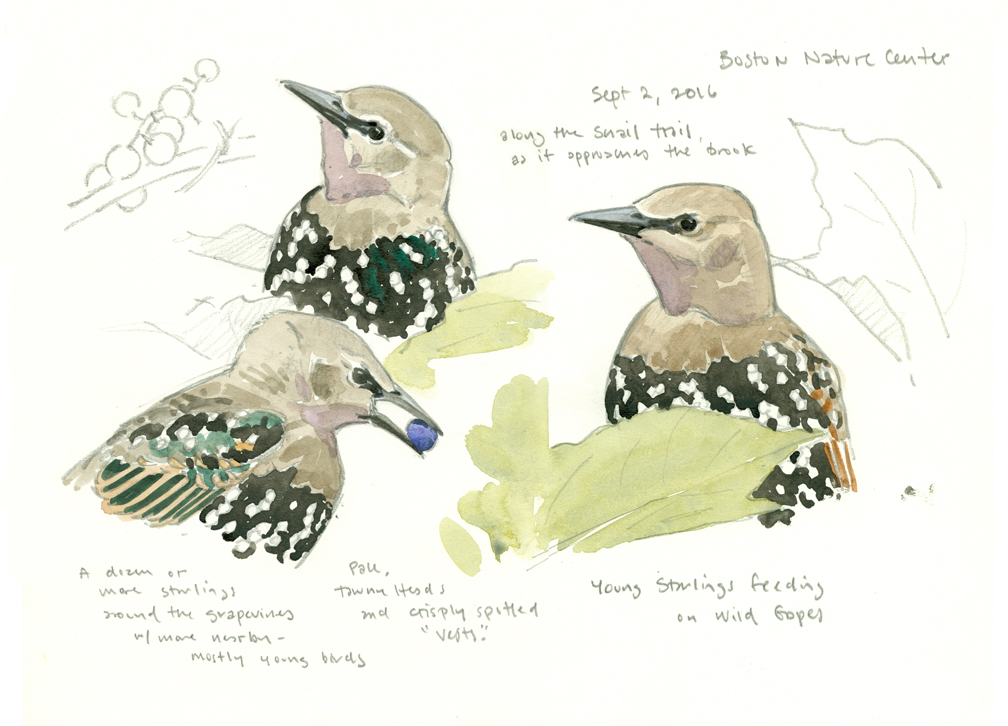
Sketchbook studies of young starlings, pencil and watercolor, 9″ x 12″
Young starlings display this unusual plumage for only a short time in late summer. Their tawny gray heads are set off by black vests densely spangled with bold white spots. A black “bandit mask” on the face gives them an intense, slightly sinister look. The combination of the fruiting grapevines and the smartly dressed birds leaves a powerful impression – and one that I re-create later in my studio.
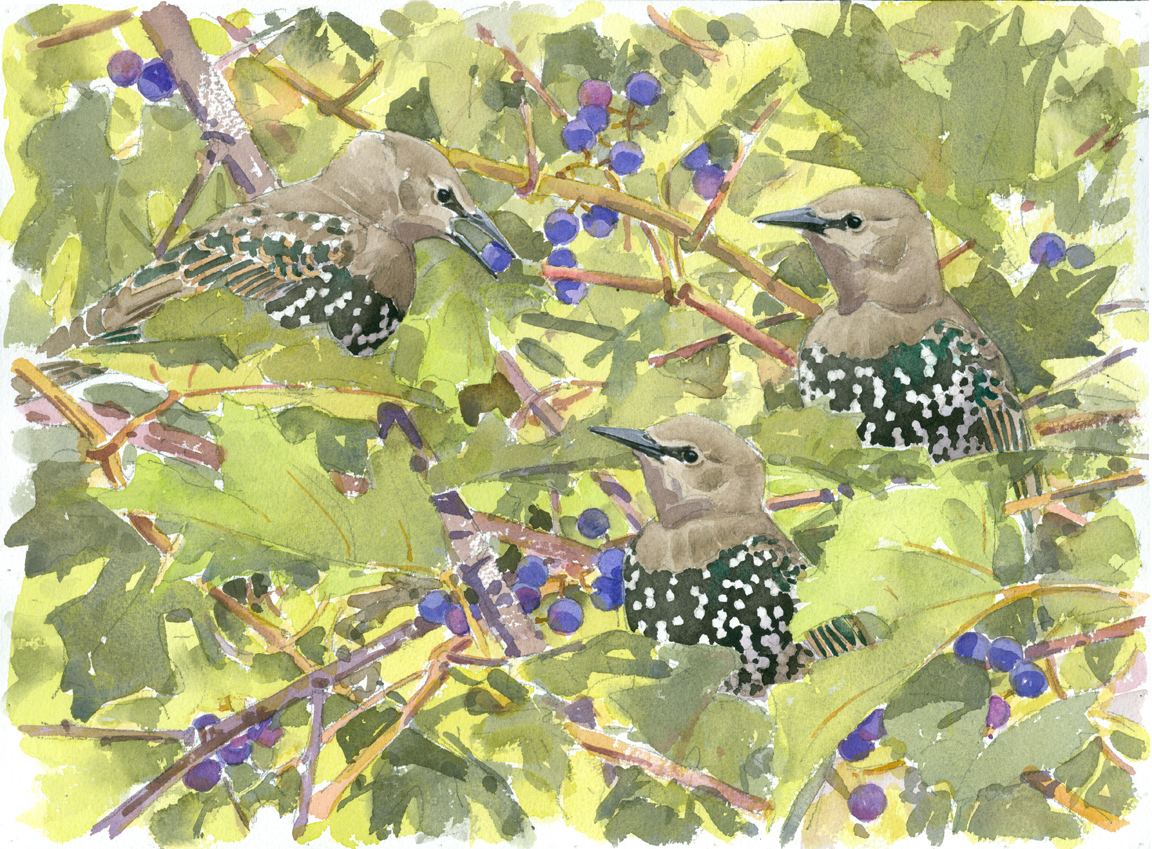
Young Starlings and Wild Grapes, watercolor on Arches rough, 12.25″ x 16.25″
The Fox Trail circles a large cattail marsh. It’s an unexpected surprise, this expanse of cattails in the midst of the city. If it weren’t for the roar of traffic coming from the American Legion Highway, I could imagine I’m in a wild and remote place!
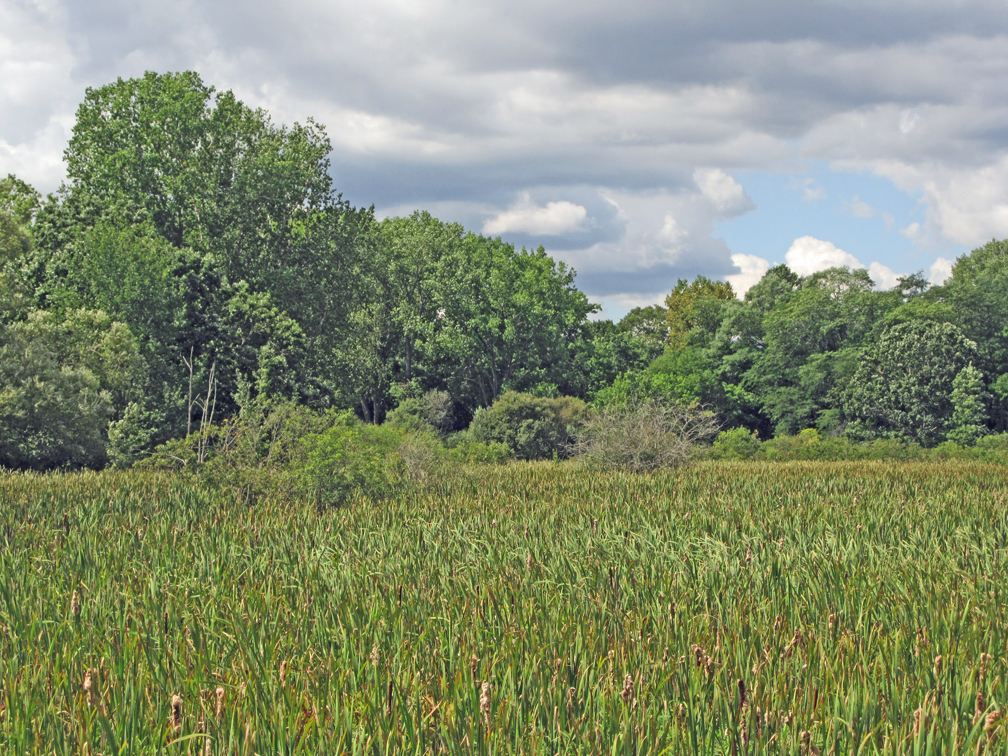
It’s been a very dry summer, and there is precious little water in the marsh. Deer and other animals have trampled down trails through the cattails, and several of these “game trails” can be seen from the overlook.
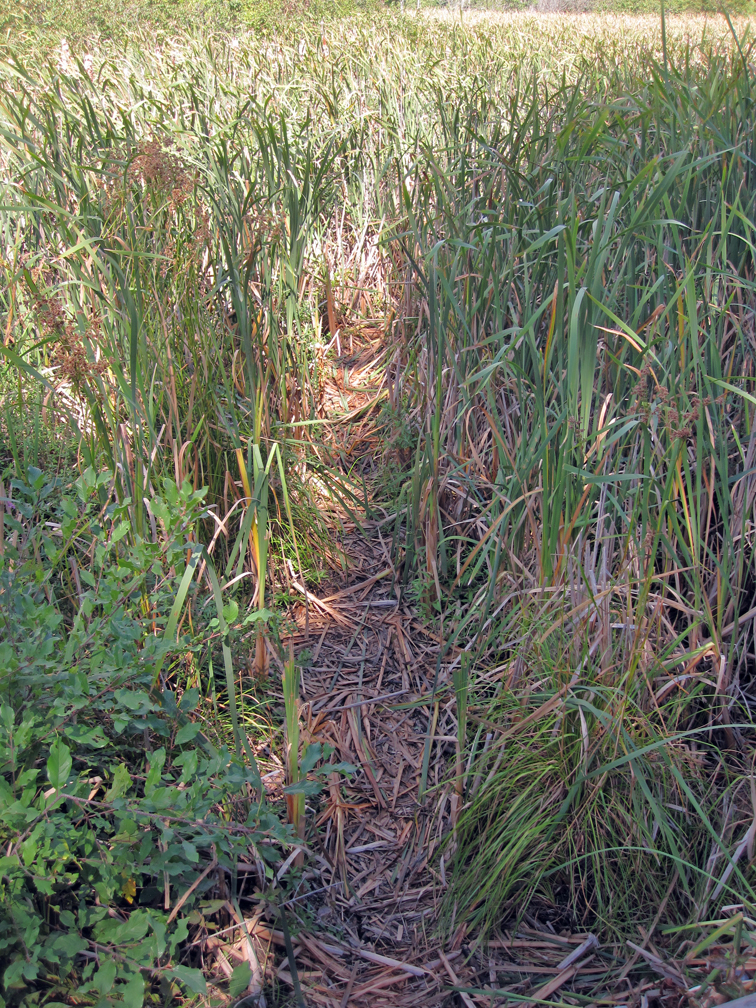
Game Trail
Back at the Nature Center, the last day of camp is winding down, and a group of kids are playing tag while they await their rides home. I live in a lightly developed, rural area of the state, where nature is right outside the door. To me, the city can seem like a place where nature is losing the competition for space. The Boston Nature Center demonstrates that the natural world can be accessible to all people in all places.

July 11, 2016
Sampsons Island Wildlife Sanctuary, Cotuit
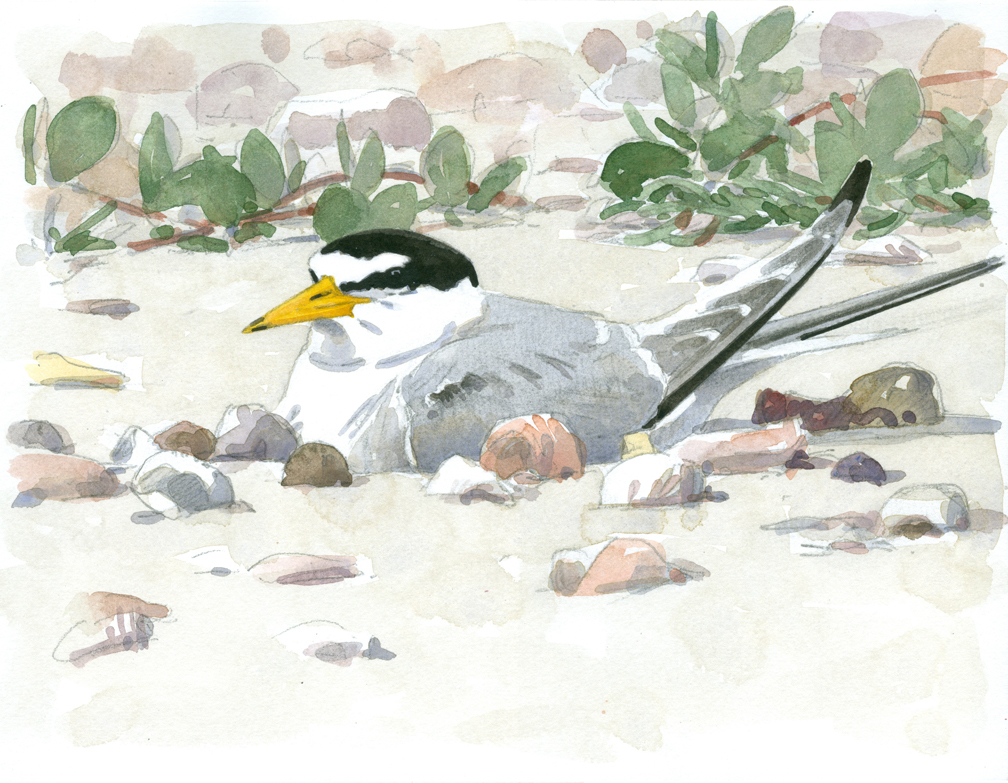
Incubating Least Tern, watercolor on Fluid 100 cold-press, 9″ x 12″
Sampson’s Island is my first sanctuary visit that requires a BOAT. I meet two coastal waterbird wardens at a rendezvous point in Cotuit, and load my field kit into a small, open runabout. Brad Bower is the Sampson’s Island “crew leader”, and his associate is Brian Lonabocker. They are students of biology and environmental science, and this is a summer job for them. Today, they load signs into the boat, which they’ll be posting in various spots around the island. During the peak breeding season, boats are not allowed to land on the island, in order to safeguard the birds during this critical period.
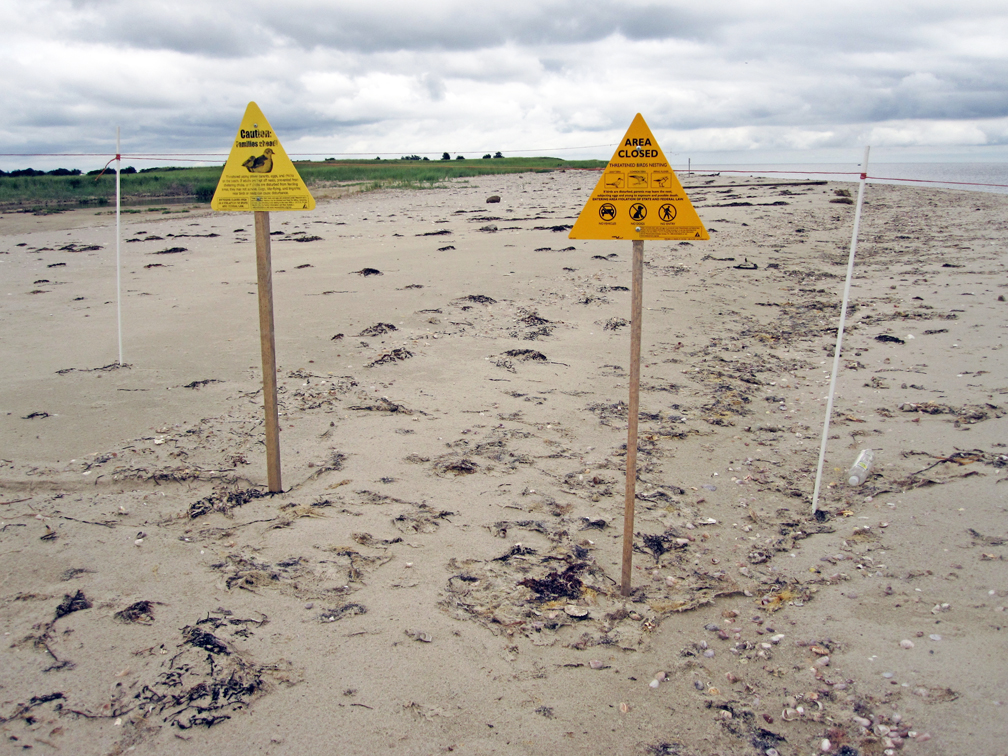
During the ride over to the island, Brad fills me in on the latest news regarding the breeding birds of Sampson’s Island. He calculates there are between 30 and 40 pairs of least terns nesting on the island, and remarks that some of the tern eggs are just starting to hatch. This season, seven pairs of piping plovers have also established nests, with six young fledged so far from two nests. Many nests of both species have failed for various reasons. Overwash from storm tides has been a factor, as well as predation by crows, a coyote and other unidentified culprits. So far, less than half of all nests have produced fledglings. For coastal waterbirds, raising a family is a hit-or-miss proposition.
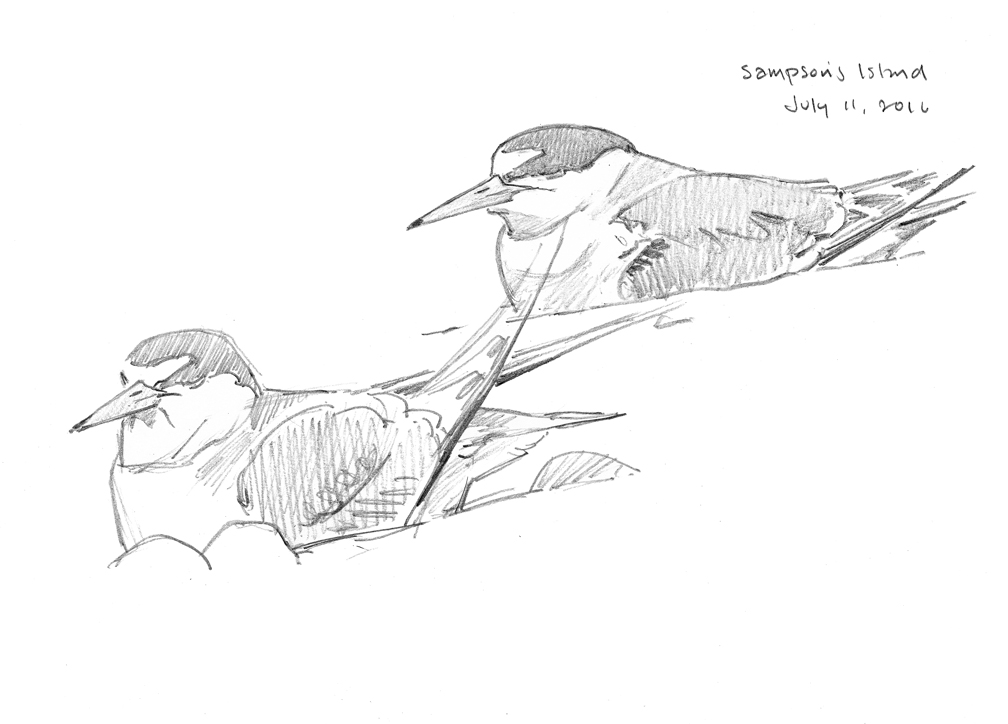
Incubating Least Terns – sketchbook page, pencil, 8.25″ x 12″
Once on the island, I position myself for good views of the least tern colonies and get to work. Incubating birds are wonderful models – very dependable and obliging! After some warm-up sketching, I take out some watercolor paper…
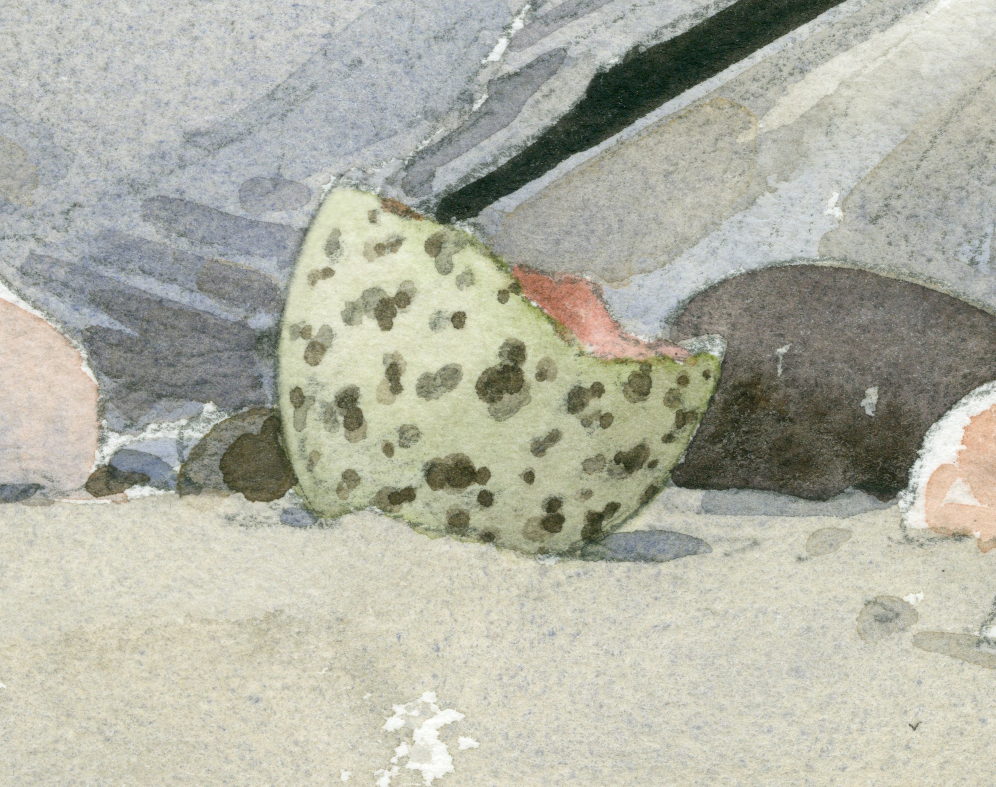
detail of finished watercolor
As I’m watching one sitting bird, I notice an eggshell near the nest, and suspect that a chick has recently hatched. The adult bird is abit restless, shifting and resettling on the nest. Next, I see a tiny bill poke out from beneath the adult’s wing, then a small, fluffy head!
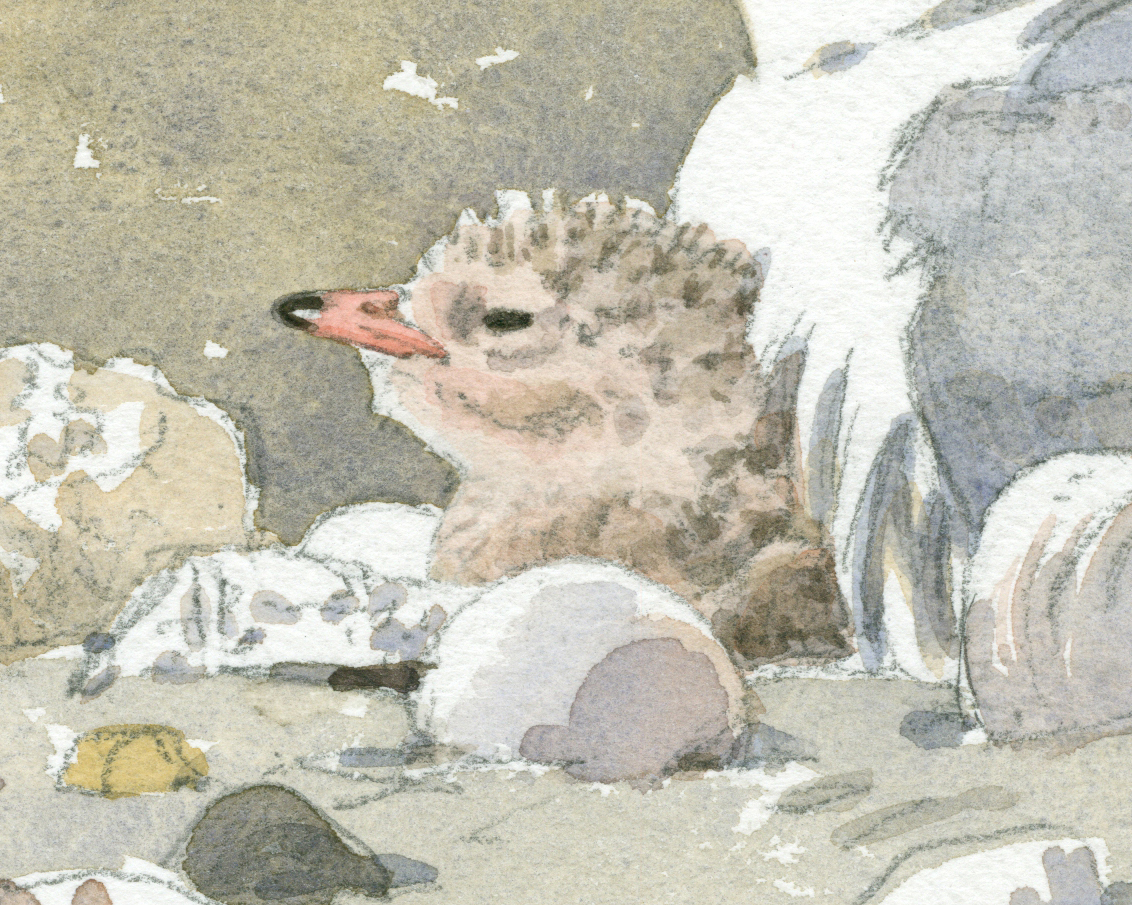
detail of the finished watercolor
The adult bird’s mate arrives with a tiny minnow, and both adults stand on either side of the nestling, prodding it to take the food, which it finally consumes with a gulp. I modify the drawing I’ve been making to include both the eggshell and the chick! A drawing from life, unlike a photograph, can be a composite of many moments.
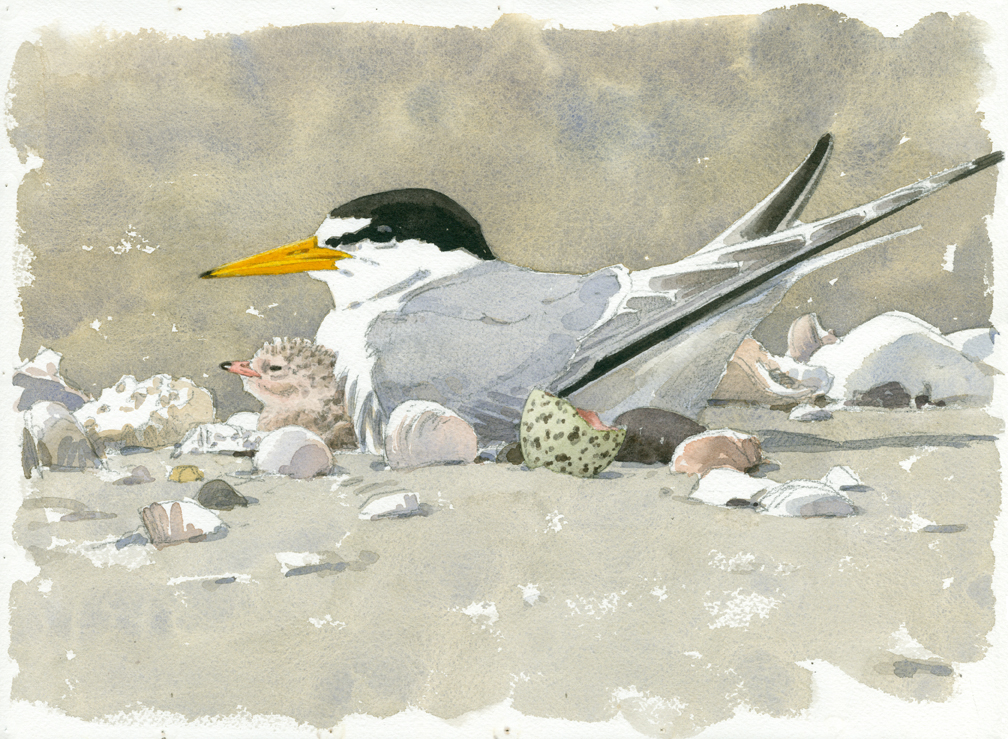
Least Tern with Chick and Eggshell, watercolor on Arches cold-press, 10.25″ x 14.25″
There were two piping plover nests on this part of the island, but the eggs hatched weeks ago. Now, the young birds can be seen foraging around a small salt pond behind the beach. The parent birds are nearby and vigilant. Several times I watch them chase off an intruding plover. The pale, plump chicks are in constant motion, and difficult to follow with the scope. They are nearly as large as the adults, but have puffy white collars around the back of the neck, and none of the crisp, strong markings they will sport as adult birds. Brad tells me they are 27 days old.
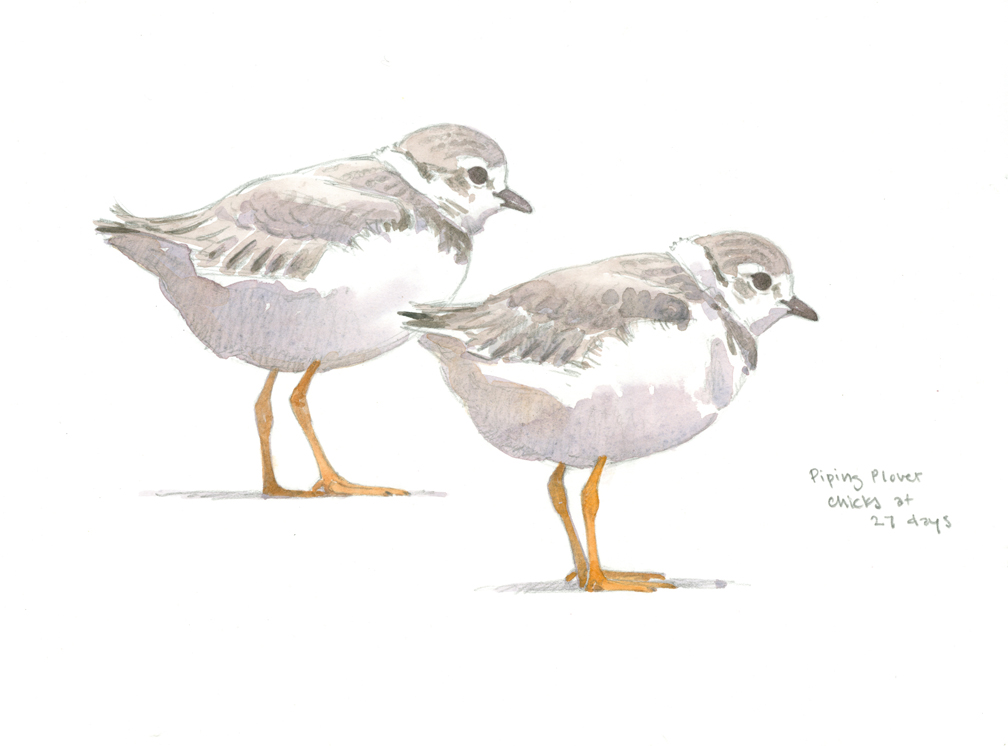
Piping Plover Chicks at 27 days, watercolor on Arches hot-press, 9″ x 12.25″
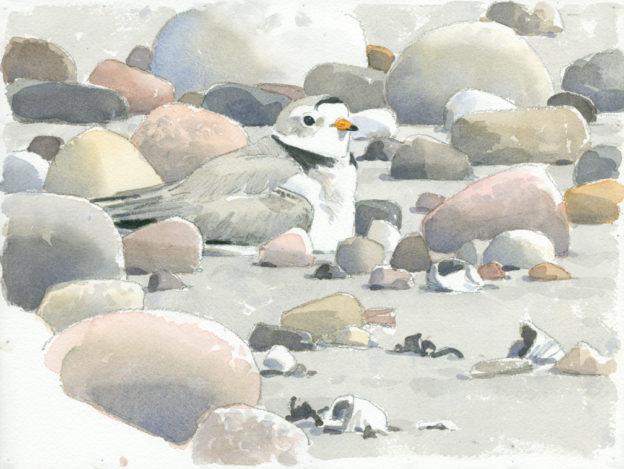
May 29, 2016
Allens Pond, Dartmouth – Part 2: Field Station/ Little Beach
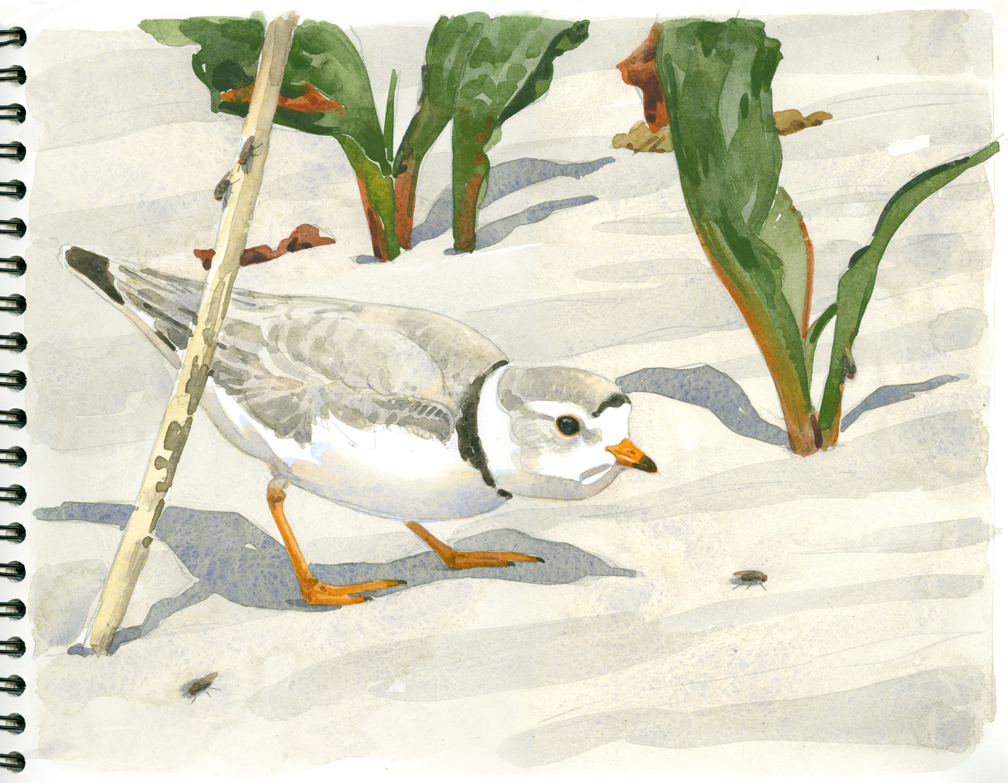
The next day, I return to Allens Pond, arriving at the Field Station entrance by 8:30 am. I’m first to pull into the parking area, but am soon joined by Jocelyn, the coastal waterbird monitor. Just the right person to ply with questions! She is very helpful, suggesting areas where I might concentrate my efforts. Jocelyn explains that six pairs of piping plovers have established territories along Little Beach, and that several are within easy walking distance. I’m told that further out on the east end of the beach, two large least tern colonies are also doing well.
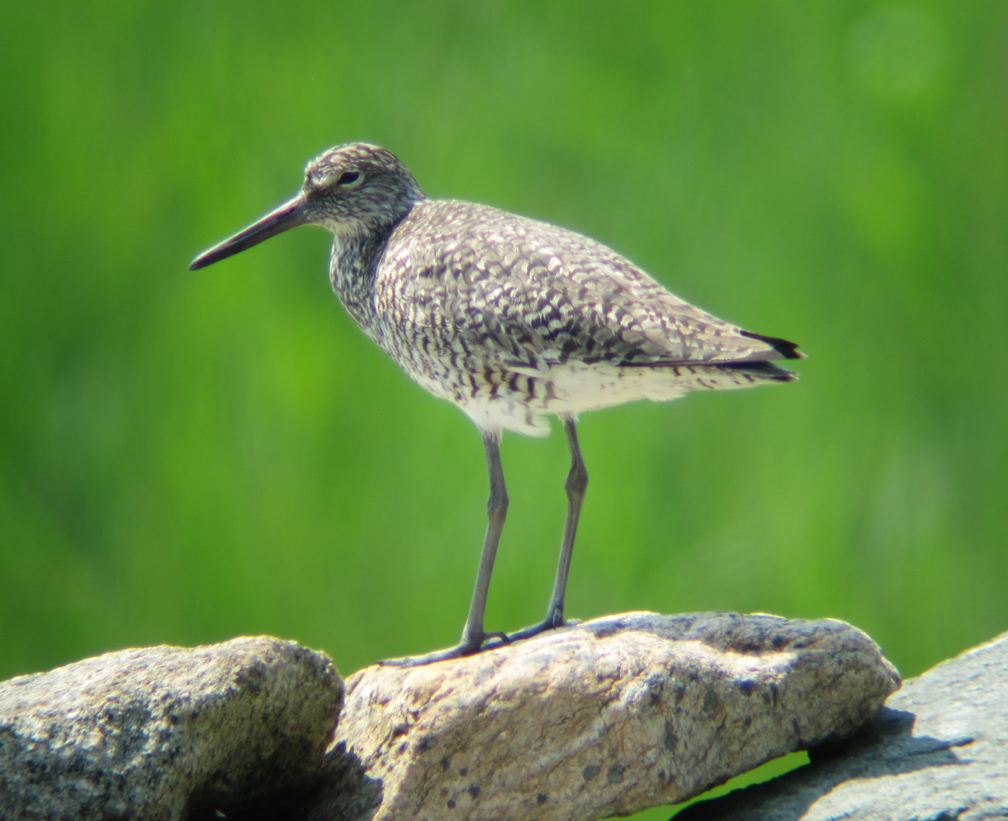
Willet
As I’m setting out on the Beach Loop, several noisy willets put on a good show – perching up on fence posts and stonewalls. I pass an active osprey nest on a platform over the marsh, and pause to scope the common tern colony on Timmy’s Rock. In the dunes, beach plum is in full bloom.

Beach Plum
I cut over to the outer beach and soon notice the areas that Jocelyn has roped off for the plovers. I stay well back from the ropes and signs, but the first plover I encounter runs from the roped area and engages in a series of distraction displays.
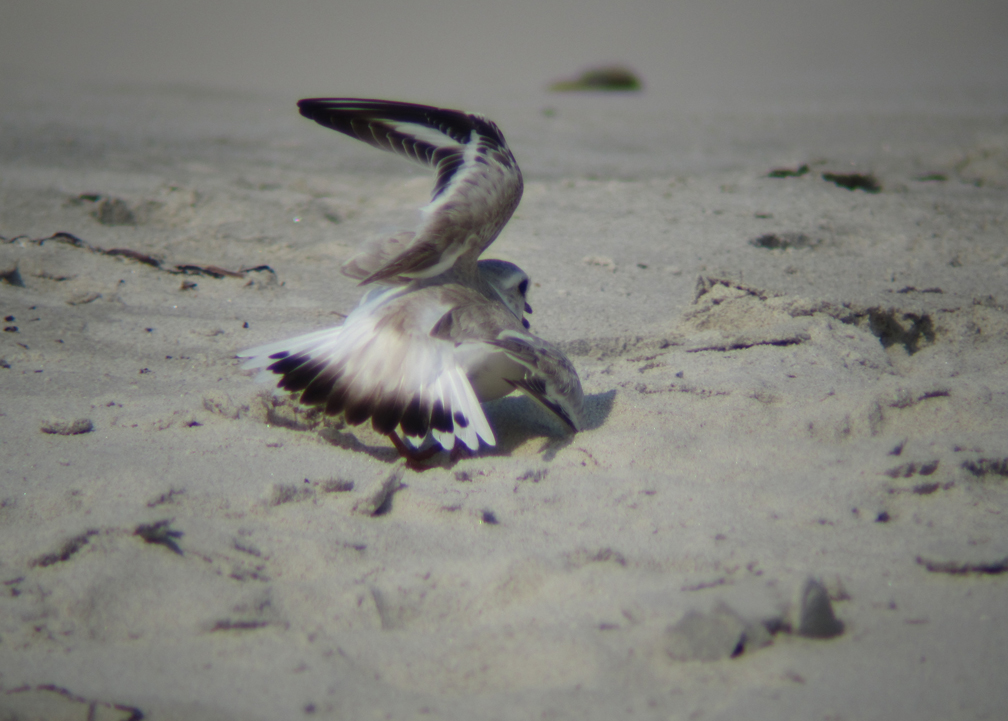
I must be too close to a nest, so I back off and the bird soon settles down. But it never stays for long in any one spot and following its course over the sand with my scope is challenging. Only occasionally does it pause to preen or sit down briefly.
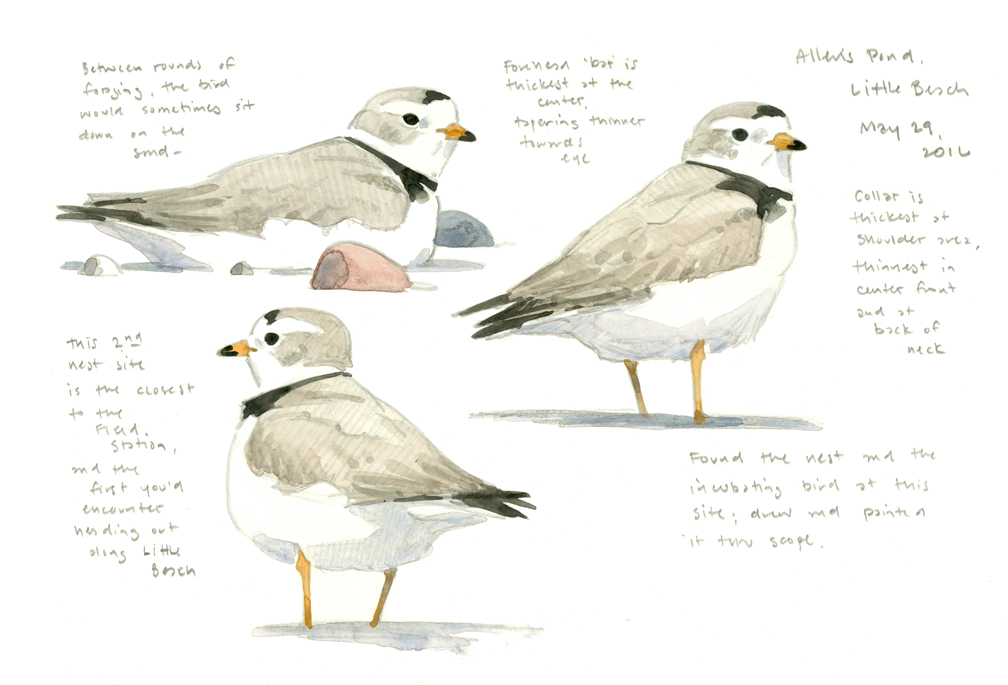
Bulkier than other plovers, piping plovers are rotund and rather “dumpy”. I enjoy working out their shapes in my sketchbook. The pale tones of the upperparts have a “bleached out” look that blends seamlessly into the sandy environment and the few dark accents on the forehead and chest can easily be mistaken for random bits of flotsam.

Piping Plover and Shore Flies, watercolor on Arches hot-press, 10.25″ x 13″
This bird appears to be feeding primarily on shore flies (family Ephydridae, genus Notiphila ?) which are abundant – crawling over the sand and beach vegetation.
Further along the beach, I’m scoping another plover territory when I locate an incubating bird. A few times it stands up, and I can see at least three speckled eggs under the bird. It’s an opportunity made for a bird artist, so I take out a sheet of watercolor paper and set to work…

Piping Plover on Nest, watercolor on Arches cold-press, 9″ x 12″